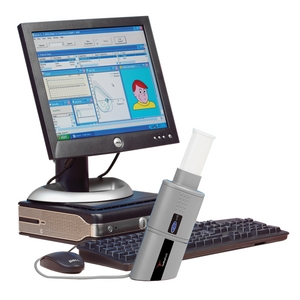History – 2019 K to S
Kalaitzis IS, Rowbotham NJ, Smith SJ, Smyth AR. Do current clinical trials in cystic fibrosis match the priorities of patients and clinicans? A systematic review. J Cyst Fibros. 2019 Jun 21. pii: S1569-1993(19)30806-9. doi: 10.1016/j.jcf.2019.06.005. [Epub ahead of print] [PubMed]
There are many uncertainties regarding Cystic Fibrosis (CF) treatment. Recently, the first James Lind Alliance (JLA) Priority Setting Partnership (PSP) in CF was completed, bringing clinicians, patients and carers together to identify the Top 10 research priorities. Here we investigate how well the current clinical trials landscape reflects these priorities. Trials in CF were identified through searches of research databases (Pubmed, ANZCTR, EU clinical trials register, ClinicalTrials.gov and ISRCTN). Trials meeting inclusion criteria of registered intervention studies in CF published between 01.012016 and 11.09.2017 were matched to the Top 10 priorities. We identified 259 trials, with 193 fulfilling the inclusion criteria. Only 63 (33%) of these matched one or more of the JLA priorities showing that current clinical trials poorly reflect the JLA Top 10. By increasing awareness of the Top 10 priorities, it is hoped that this will fuel future research in areas important to the CF community.
Original article on top ten priorities is summarised below –
Rowbotham NJ, Smith S, Leighton PA, Rayner OC, Gathercole K, Elliott ZC, Nash EF, Daniels T, Duff AJA, Collins S, Chandran S, Peaple U, Hurley MN, Brownlee K, Smyth AR.The top 10 research priorities in cystic fibrosis developed by a partnership between people with CF and healthcare providers. Thorax. 2018 Apr;73(4):388-390. doi: 10.1136/thoraxjnl-2017-210473. Epub 2017 Aug 4.28778919 Free full article [Pubmed]
There remain many treatment uncertainties in cystic fibrosis (CF). With limited resources, research should focus on questions which are most important to the CF community. We conducted a James Lind Alliance Priority Setting Partnership in CF. Research questions were elicited and then prioritised in successive surveys. A workshop agreed the final top 10. Online methods avoided cross infection and widened participation. The elicitation survey had 482 respondents (1080 questions) and prioritisation survey 677 respondents. Participants were drawn equally from the patient and clinical communities globally.They have achieved a consensus on 10 research priorities which will be attractive to funders.
Top ten priorities of the James Lind Alliance Priority Setting Partnership in order they were ranked (Rowbotham et al 2018) with the number of trials matching each of the top ten priorities (from Kalaitzis et al 2019). Some trials were matched to more than one priority.
1.What are effective ways of simplifying the treatment burden of people with cystic fibrosis (PWCF)?
2.How can we relieve gastrointestinal symptoms such asstomach pain, bloating and nausea in PWCF ?
3.What is the best treatment for non-tuberculous mycobacterium (NTM) in PWCF?
4. What therapies are effective in delaying or preventing progressionof lung disease in early lig]fe in PWCF?
5.Is there a way of preventing cystic fibrosis related diabetes in PWCF?
6.What effective ways of motivation, support and technologies helpPWCF improve and sustain adherence to treatment?
7.Can exercise replace chest physiotherapy for PWCF?
8.What antibiotic combinations and dosing plans should be used for CF exacerbations and should antibiotic combinations be rotated?
9.Is there a way of reducing the negative effects of antibiotics e.g. resistance risk and adverse symptoms in PWCF?
10. What is the best way of eradicating Pseudomonas aeruginosa in PWCF?8
With regard to CFTR modulators, the participants believed that research into CFTR modulators would progress whether prioritised or not – hence their absence from the priorities list.
Kerem E, Oren YS, Kerem B. Take it personally: how personal we reach when we are so different from each other? J Cyst Fibros. 2019 Jan;18(1):6-7. doi: 10.1016/j.jcf.2018.12.009. [Pubmed]

Fig. 2 Eitan Kerem
-

Fig.1 Batsheva Kerem
Discussing the variable response to Kalydeco and Orkambi among patients carrying the same genotype was shown the authors note that since these drugs are extremely expensive, it could be argued that only patients that show clinical benefit should take them. Therefore, in-vitro cellular models and genetic tools are needed to predict patient-specific clinical outcomes.
The authors discuss three papers in the present issue of JCF (below) that describe cellular systems that can be or are already used to predict response to therapy in vivo. They note that more studies are needed to correlate the response in the different in vitro systems to clinical response, since other genes, most of them unknown yet, can modify the response in vivo. The SLC29A6 gene was suggested to modify response to Kalydeco by modulating the airway response to CFTR directed therapies. The cost of the CFTR modifier therapies, and the possible need to take several in combination in order to achieve full CFTR correction of function, emphasizes the need for various, complementary cellular systems and clinical data that may together enlarge the basis for predicting CFTR drug response in a patient-specific manner.
– Clancy, J.P., Cotton, C.U., Donaldson, S.H., Solomon, G.M., VanDevanter, D.R., Boyle, M.P. et al. CFTR modulator theratyping: Current status, gaps and future directions. J Cyst Fibros. 2019; 18: 22–34. [Pubmed]
– Eckford, P.D.W., McCormack, J., Munsie, L., He, G., Stanojevic, S., Pereira, S.L. et al. The CF Canada-Sick Kids Program in individual CF therapy: A resource for the advancement of personalized medicine in CF. J Cyst Fibros. 2019; 18: 32–40. [Pubmed]
– Jennings, S., Ng, H.P., and Wang, G. Establishment of a ΔF508-CF promyelocytic cell line for cystic fibrosis research and drug screening. J Cyst Fibros. 2019; 18: 41–50. [Pubmed]
Kessels SJM, Carter D, Ellery B, Newton S, Merlin TL. Prenatal genetic testing for cystic fibrosis: a systematic review of clinical effectiveness and an ethics review. Genet Med. 2019 Aug 30. doi: 10.1038/s41436-019-0641-8. [Epub ahead of print] [Pubmed]

Fig. 3 Sharon Kessels researchers.adelaide.edu.au
To determine effectiveness of prenatal genetic testing the authors conducted a systematic literature review whose protocol outlined search strategies across eight databases, study inclusion criteria, and pre-specified literature screening, data extraction, and synthesis processes. We conducted a scoping search on ethical considerations.The genetic test showed good diagnostic performance. A change in clinical management was observed: termination of pregnancy (TOP) occurred in most cases where two pathogenic variants were identified in a fetus of carrier parents (158/167; 94.6%). The TOP rate was lower in pregnancies where CF was diagnosed after fetal echogenic bowel detection (~65%). TOP and caring for a child with CF were both associated with poor short-term parental psychological outcomes. Ethical analyses indicated that informed decisions should have been the main endpoint, rather than CF-affected births prevented.
The authors concluded CF testing leads to fewer CF-affected births. It is difficult to assess whether this means the test is valuable, since patients may not value TOP primarily in terms of maternal or fetal health outcomes, psychological or otherwise. The value of testing should arguably be measured in terms of improving patient autonomy rather than health.

Fig. 4 Drew Carter LinkedIn
– A very clear article on a difficult subject. Recommended.
Sharon Kessels (fig.3) is Senior Research Officer, Adelaide Health Technology Assessment (AHTA), School of Public Health, The University of Adelaide, Adelaide, SA, Australia.
Dr Drew Carter (fig.4) Research Fellow, Ethics, Adelaide Health Technology Assessment (AHTA), School of Public Health, The University of Adelaide, Adelaide, SA, Australia. Described as a moral philosopher and health policy researcher who works mostly at the interface of ethics and health economics.
Kim J, Davies Z, Dunn C, Wine JJ, Milla C. Ivacaftor restores CFTR-dependent sweat gland fluid secretion in cystic fibrosis subjects with S945L alleles.J Cyst Fibros. 2018 Mar;17(2):179-185. doi: 10.1016/j.jcf.2017.12.005. Epub 2017 Dec 24.[Pubmed]
A study to determine in vivo effects of CFTR modulators on mutation S945L. The authors measured effects of CFTR modulators on CFTR-dependent sweating (‘C-sweat’) in two pancreatic sufficient cystic fibrosis (CF) subjects. S1 (S945L/G542X) took ivacaftor and S2 (S945L/F508del) took ivacaftor+tezacaftor. Sweating was stimulated pharmacologically to produce sequentially both CFTR-independent (methacholine stimulated) M-sweat and C-sweat; and the ratio of these was compared. Sweat secretion was measured with two methods: real time secretory rate quantitative recording and by optically measuring the growth of sweat bubbles under oil from multiple identified glands.
Using the quantitative recorder, we saw zero C-sweat secretion off-drug, but when on-drug the C-sweat responses for both subjects were comparable to those seen in carriers. The on-drug response was further quantified using the sweat bubble method. Each subject again showed robust C-sweat responses, with C-sweat/M-sweat ratios~half of the ratio determined for a cohort of 40 controls tested under identical conditions.
The authors concluded these in vivo results, consistent with prior in vitro findings, indicate that the drug treatments restore near-normal function to S945L-CFTR, and support the use of ivacaftor as a treatment for CF patients who carry this allele.
From the Cystic Fibrosis Research Laboratory, Stanford University, Stanford, CA, USA.
King CS, Brown AW, Aryal S, Ahmad K, Donaldson S. Critical Care of the Adult Patient With Cystic Fibrosis.2019 Jan;155(1):202-214. doi:10.1016/j.chest.2018.07.025. Epub 2018 Aug 2. [Pubmed]

Fig. 5 Christopher King. Inova.org
Adult pulmonary and critical care physicians increasingly will be involved in the care of these patients. Patients with CF are at risk for numerous conditions that require ICU admission, including respiratory failure, massive haemoptysis, pneumothorax, hepatic failure, and bowel obstruction. Multiple aspects of the care of patients with CF benefit from specialized knowledge, including pancreatic enzyme replacement and nutritional support; airway clearance modalities; treatment of multiply resistant, polymicrobial infections, and unique drug metabolism. In extreme cases, patients may benefit from advanced therapies, including extracorporeal support and organ transplant.
Optimal care of patients with CF requires a multidisciplinary care team that includes respiratory therapists, dieticians, social workers, psychologists, pharmacists, and physicians who have expertise in the treatment of this complex, multisystem disorder.
– This is still a very important message. For example an instance many years ago involved admission of a person with CF to an ICU for a respiratory indication. Omission of the pancreatic enzyme therapy led to meconium ileus equivalent intestinal obstruction, subsequent treatment of this complication proved fatal. A CF expert should be part of the ICU team.
Dr Christopher King (fig 5) is pulmonologist in Falls Church Virginia and Inova Fairfax Hospital
Kirwan L, Fletcher G, Harrington M, Jeleniewska P, Zhou S, Casserly B, Gallagher CG, Greally P, Gunaratnam C, Herzig M, Linnane B, McElvaney NG, McKone EF, McNally P, Mullane D, Ní Chróinín M, O’Mahony M, Plant BJ, Jackson AD. Longitudinal Trends in Real-World Outcomes after Initiation of Ivacaftor. A Cohort Study from the Cystic Fibrosis Registry of Ireland. Ann Am Thorac Soc. 2019 Feb;16(2):209-216. doi: 10.1513/AnnalsATS.201802-149OC.[Pubmed]
-

Fig. 6 Laura Kirwan
cfri.ieThe authors used cystic fibrosis (CF) registry data to assess outcomes after the initiation of ivacaftor, a CF transmembrane conductance regulator (CFTR) potentiator approved for the treatment of CF with a defective gating CFTR mutation. Longitudinal trends were examined using mixed-effects regression analysis in 80 ivacaftor-treated patients with CF aged 6 to 56 years registered with the CF Registry of Ireland with at least 36 months of before and after commencement data. The effects of ivacaftor treatment on forced expiratory volume in 1 second (FEV1) % predicted, body mass index (BMI), hospitalization for pulmonary exacerbation, and oral and intravenous antibiotic use were assessed.
In the 36 months after ivacaftor initiation, FEV1% predicted improved by 2.26% per annum (95% confidence interval [CI], 0.2 to 4.3) for patients aged younger than 12 years, remained unchanged for 12- to younger than 18-year-olds (95% CI, -1.9 to 2.9), and declined in adults by 1.74% per annum (95% CI, -3.1 to -0.4). BMI in adults increased 0.28 kg/m2 per annum (95% CI, 0.03 to 0.5), and there was no significant change in BMI z-score in children (95% CI, -0.01 to 0.1). In the year after ivacaftor initiation, intravenous antibiotic treatment reduced by 46% (95% CI, -62.5% to -23.3%, oral antibiotic treatment reduced by 49% (95% CI, -61.1% to -32.1%), and there was no significant reduction in hospitalization (95% CI, -59.2% to 9.7%).
In this study of real-world CF registry data, clinical outcomes improved and healthcare resource utilization decreased after commencing ivacaftor.
Dr Laura Kirwan (fig.6) is Research Statistician at the Cystic Fibrosis Registry of Ireland.
Editorial below relating to the above paper of Kirwan et al.
Barry P J, Jones AM, After the Celebrations: Lessons from the New Era of Cystic Fibrosis Transmembrane Conductance Regulator Modulator Therapy. Ann Am Thorac Soc 2019; 16(2):189-190. [Pubmed]

Fig. 8 Andrew Jones
Research and Innovation

Fig. 7 Peter J Barry CFMATTERS
Peter Barry and Andrew Jones of Manchester, in an editorial discuss this paper. They note that the use of national and international registries has become increasingly commonplace. They discuss the potential problems of patient inclusion including the accuracy of registry recorded data. Registry data willl have less strict monitoring than in clinical trials.
The headline results of this present study are that the significant benefits ivacaftor therapy seen in clinical trials are replicated in real life practice in patients aged 6 years and over. They discuss the reduced need for intravenous antibiotics on ivacaftor but caution against considering time on IV antibiotics as synonymous with pulmonary exacerbations and suggest this may be related to a number of different factors including a change in patient and physician thresholds for treatment. The reduced rate of decline appears to be encouraging in children and adolescents but in adults the initial improvement appears to progress after ivacaftor introduction in contrast to the findings in the initial trails. The possible reasons are discussed including the inevitable progression in lungs already significantly damaged or could the reduced need for antibiotics be related. They consider it essential that such studies are are continued and honed to ensure the maximum benefits of CFTR modulator therapy in the wider context of CF clinical care.
Dr Peter Barry (fig.7) and Prof. Andrew Jones (fig. 8) are respiratory physicians at the Manchester Adult Cystic Fibrosis Centre, Wythenshawe Hospital, Manchester University NHS Foundation Trust, Manchester, and the Division of Infection, Immunity and Respiratory Medicine, School of Biological Sciences, The University of Manchester, Manchester, UK
Kopp BT, Fitch J, Jaramillo L, Shrestha CL, Robledo-Avila F, Zhang S, Palacios S, Woodley F, Hayes D Jr, Partida-Sanchez S, Ramilo O, White P, Mejias A. Whole-blood transcriptomic responses to lumacaftor/ivacaftor therapy in cystic fibrosis. J Cyst Fibros. 2019 Aug 29. pii: S1569-1993(19)30868-9. doi: 10.1016/j.jcf.2019.08.021. [Epub ahead of print] [Pubmed]

Fig. 9 Benjamin T Kopp
pedsresearch.org
Cystic fibrosis (CF) remains without a definitive cure. Novel therapeutics targeting the causative defect in the cystic fibrosis transmembrane conductance regulator (CFTR) gene are in clinical use. Lumacaftor/ivacaftor is a CFTR modulator approved for patients homozygous for the CFTR variant p.Phe508del, but there are wide variations in treatment responses preventing prediction of patient responses. We aimed to determine changes in gene expression related to treatment initiation and response.
Whole-blood transcriptomics was performed using RNA-Seq in 20 patients with CF pre- and 6 months post-lumacaftor/ivacaftor (drug) initiation and 20 non-CF healthy controls. Correlation of gene expression with clinical variables was performed by stratification via clinical responses.They identified 491 genes that were differentially expressed in CF patients (pre-drug) compared with non-CF controls and 36 genes when comparing pre-drug to post-drug profiles. Both pre- and post-drug CF profiles were associated with marked overexpression of inflammation-related genes and apoptosis genes, and significant under-expression of T cell and NK cell-related genes compared to non-CF. CF patients post-drug demonstrated normalized protein synthesis expression, and decreased expression of cell-death genes compared to pre-drug profiles, irrespective of clinical response. However, CF clinical responders demonstrated changes in eIF2 signaling, oxidative phosphorylation, IL-17 signaling, and mitochondrial function compared to non-responders. Top overexpressed genes (MMP9 and SOCS3) that decreased post-drug were validated by qRT-PCR. Functional assays demonstrated that CF monocytes normalized calcium (increases MMP9 expression) concentrations post-drug.
The authors concluded transcriptomics revealed differentially regulated pathways in CF patients at baseline compared to non-CF, and in clinical responders to lumacaftor/ivacaftor.
Dr Benjamin T Kopp (fig.9) is Associate Professor and Pediatric Pulmonologist, Division of Pulmonary Medicine, Nationwide Children’s Hospital, Columbus, Ohio
Korten I, Kieninger E, Yammine S, Cangiano G, Nyilas S, Anagnostopoulou P, Singer F, Kuehni CE, Regamey N, Frey U, Casaulta C, Spycher BD, Latzin P; SCILD; BILD study group. Respiratory rate in infants with cystic fibrosis throughout the first year of life and association with lung clearance index measured shortly after birth. J Cyst Fibros. 2019 Jan;18(1):118-126. doi: 10.1016/j.jcf.2018.07.002. Epub 2018 Jul 27. [Pubmed]
-

Fig.11 Phillippe Latzin

Fig. 10 Insa Lapsin. kinderklinik.insel.ch
Lung impairment in cystic fibrosis (CF) starts in infancy. However, tools to monitor early lung disease are limited. Respiratory rate (RR) as a key vital sign is easy to assess during sleep and is elevated during acute respiratory disease. Thus, elevated RR could indicate early lung impairment and potentially serve as a diagnostic tool in disease monitoring.
In a prospective cohort of infants with CF diagnosed by newborn screening and healthy controls RR was measured and respiratory symptoms reported weekly throughout infancy. Infants performed a lung function measurement within the first weeks of life.
The analyses included 5656 measurements from 153 infants (43 with CF). RR declined from 43.2 (40.5)/min at 6 weeks of age to 28.3 (24.6)/min at 50 weeks in infants with CF (healthy controls). Infants with CF had consistently higher RR than controls (mean difference: 4.15/min; (95% CI 2.86-5.44); p < .001). In both study groups, RR was increased throughout the study period in infants with higher lung clearance indices (LCI) and during episodes of respiratory infections.
The authors concluded infants with CF have a higher RR compared to healthy controls during the first year of life. The association with early LCI measurements, the current gold standard to assess physiology of peripheral airways persisted throughout the study period. This may indicate tracking of lung function by RR. It might thus be an early subtle sign of functional respiratory deficit. Further studies will show if RR can be used as a sensitive and promising marker to monitor early CF lung disease.
Dr Insa Korten (fig.10) Department of Pediatrics, Pediatric Respiratory Medicine, Inselspital, Bern University Hospital, University of Bern, Bern, Switzerlan
Prof. Philipp Latzin (fig. 11) is the corresponding author. He is Head of Paediatric Pulmonology at University Children’s Hospital Bern.[BILD – Basel-Bern-Infant Lung Development cohort SCILD – Swiss Cystic Fibrosis Infant Lung development cohort]
— This is a really interesting and valuable study validating good old-fashioned clinical observations of the importance of a raised respiratory rate with the use of sophisticated modern infant respiratory function tests. The authors suggest that respiratory rate could be a simple method lung function tracking in early life – a most important time when early lung damage seems to be relatively common and a time in infancy which is receiving increasing attention.
Kourliouros A, Tsui S, Parmar J.Patient outcomes from time of listing for lung transplantation in the UK: are there disease-specific differences? Thorax. 2019 Jan;74(1):60-68. doi: 10.1136/thoraxjnl-2018-211731. Epub 2018 Oct 3.[Pubmed]
The demand for lung transplantation vastly exceeds the availability of donor organs. This translates into long waiting times and high waiting list mortality. The authros set out to examine factors influencing patient outcomes from the time of listing for lung transplantation in the UK, examining for differences by patient characteristics, lung disease category and transplant centre. Data were obtained from the UK Transplant Registry held by NHS Blood and Transplant for adult lung-only registrations between 1January 2004 and 31 March 2014. Pretransplant and post-transplant outcomes were evaluated against lung disease category, blood group and height.
The authors concluded the way donor lungs were allocated in the UK resulted in discrepancies between the risk profile and probability of lung transplantation. A new donor lung allocation scheme was introduced in 2017 to try to address these shortcomings
Antonios Kourliouros is in the Department of Cardiac Surgery, Royal Brompton Hospital, London, UK.
Krainer G, Schenkel M, Hartmann A, Ravamehr-Lake D, Deber CM, Schlierf M. CFTR transmembrane segments are impaired in their conformational adaptability by a pathogenic loop mutation and dynamically stabilized by Lumacaftor. J Biol Chem. 2019 Dec 27. pii: jbc.AC119.011360. doi: 10.1074/jbc.AC119.011360. [Epub ahead of print] Free full text [Pubmed]
The cystic fibrosis transmembrane conductance regulator (CFTR) is an ion channel protein that is defective in

Fig. 13 Georg Krainer ch.cam.ac.uk
individuals with cystic fibrosis (CF). To advance the rational design of CF therapies, it is important to elucidate how mutational defects in CFTR lead to its impairment and how pharmacological compounds interact with and alter CFTR. Here, using a helical-hairpin construct derived from CFTR’s transmembrane (TM) helices 3 and 4 (TM3/4) and their intervening loop, we investigated the structural effects of a patient-derived CF-phenotypic mutation, E217G, located in the loop region of CFTR’s membrane-spanning domain. Employing a single-molecule FRET assay to probe the folding status of reconstituted hairpins in lipid bilayers, we found that the E217G hairpin exhibits an altered adaptive packing behavior stemming from an additional GXXXG helix-helix interaction motif created in the mutant hairpin. This observation suggested that the misfolding and functional defects caused by the E217G mutation arise from an impaired conformational adaptability of TM helical segments in CFTR. Addition of the small-molecule corrector Lumacaftor exerts a helix stabilization effect not only on the E217G mutant hairpin, but also on WT TM3/4 and other mutations in the hairpin. This finding suggests a general mode of action for Lumacaftor through which this corrector efficiently improves maturation of various CFTR mutants.
Dr Georg Krainer (fig.13) is at Technische Universitat Dresden Germany and Department of Chemistry University of Cambridge
Corresponding author is Dr Michael Schlierf is research group leader of B Cube and Professor of Molecular Biophysics awarded
Wilson LM, Morrison L, Robinson KA. Airway clearance techniques for cystic fibrosis: an overview of Cochrane systematic reviews. Cochrane Database Syst Rev. 2019 Jan 24;1:CD011231. doi: 10.1002/14651858.CD011231.pub2. [Epub ahead of print] [Pubmed]

Fig.14 Lisa Wilson
LinkedIn
The authors reviewed the latest acceptable information and concluded there is little evidence to support the use of one airway clearance technique over another. People with cystic fibrosis should choose the airway clearance technique that best meets their needs, after considering comfort, convenience, flexibility, practicality, cost, or some other factor. More long-term, high-quality randomised controlled trials comparing airway clearance techniques among people with cystic fibrosis are needed.
— One doubts the need for “more longterm high-quality randomised controlled trials” !! The advice that “People with cystic fibrosis should choose the airway clearance technique that best meets their needs” seems to be the sensible answer.
Lisa M Wilson (fig. 14) is a physiotherapist at the Evidence-based Practice Center, Johns Hopkins University, Hampton House, 6th Floor, 624 North Broadway, Baltimore, MD, USA,
Lai S, Mazzaferro S, Mitterhofer AP, Bonci E, Marotta PG. Pelligra F, Murciano M, Celani C, Troiani P, Cimino G, Palange P.Renal involvement and metabolic alterations in adults patients affected by cystic fibrosis. J Transl Med. 2019 Nov 25;17(1):388. doi: 10.1186/s12967-019-02139-4.[Pubmed]Free PMC Article
To evaluate the incidence, the manifestations of renal disease and the possible association with metabolic and endothelial dysfunction markers in the CF population. The authors performed a cross-sectional, observational study on 226 CF patients. Clinical and laboratory instrumental parameters (metabolic, inflammatory and endothelial dysfunction markers) were evaluated.They showed 65 patients with chronic kidney disease (CKD) and 158 patients with a reduced value of forced expiratory volume in 1 s (FEV1), of which 58 patients with a severe reduction of FEV1. Moreover 28 patients had undergone lung transplantation and them had a significant lower estimated Glomerular Filtration Rate (eGFR) with respect to the non-transplanted patients (p < 0.001). We reported also a significant association between lower eGFR value and serum triglycerides, total cholesterol and low-density lipoproteins (LDL) (p = 0.005, p < 0.001, p = 0.040; respectively), with a significant negative correlation between eGFR and serum triglycerides (r = - 0.28; p < 0.01). Moreover we found a significant association between lower eGFR value and serum uric acid (SUA) (p = 0.005), while we did not found an association with 25-hydroxy-vitamin-D value, serum glucose and hemoglobin A1c levels.
Theirstudy showed a high prevalence of CKD in CF patients. Moreover they showed an increase of endothelial dysfunction and metabolic indexes in patients with reduced renal function, as SUA, serum triglycerides and LDL, suggesting the need for an early and complete screening of the main metabolic indexes to reduce cardiovascular risk and progression of renal damage, in particular in patients with lung transplant.
Dr Silvia Lai is at the Department of Translational and Precision Medicine, Nephrology and Dialysis Unit, “Sapienza” University of Rome,
Lands LC, Stanojevic S. Oral non-steroidal anti-inflammatory drug therapy for lung disease in cystic fibrosis. Cochrane Database Syst Rev. 2019 Sep 9;9:CD001505. doi: 10.1002/14651858.CD001505.pub5. [Epub ahead of print] [Pubmed]

Fig. 15 Larry Lands
The searches identified 17 trials; four are included (287 participants aged five to 39 years; maximum follow-up of four years) and one is currently awaiting classification pending publication of the full trial report and two are ongoing. Three trials compared ibuprofen to placebo (two from the same center with some of the same participants); one trial assessed piroxicam versus placebo.The three ibuprofen trials were deemed to have good or adequate methodological quality, but used various outcomes and summary measures. Reviewers considered measures of lung function, nutritional status, radiological assessment of pulmonary involvement, intravenous antibiotic usage, hospital admissions, survival and adverse effects.
From the data available that they reviewed, the authors concluded that high-dose ibuprofen can slow the progression of lung disease in people with cystic fibrosis, especially in children, which suggests that strategies to modulate lung inflammation can be beneficial for people with cystic fibrosis.
Dr Larry Lands (fig.15) is in the Department of Pediatrics, Montreal Children’s Hospital, Montreal, Canada.
– One of the authors of this review, Dr Larry Lands, published the second major study on ibuprofen in 2007 essentially to confirm Konstan’s earlier findings (Konstan et al, 1995) of some slowing of deterioration of respiratory function. This was unimpressive and few clinicians prescribed the drug on a long term basis, also because of the side effects. Here Larry Lands and his colleague re-evaluates the use of ibuprofen and although finding some positive effects it is most unlikely that many clinicians will prescribe the treatment in view of the very modest advantages and definite side effects. However, it does appear to have an unexpected but favourable effect on nasal polyps (Lindstrom et al, 2007).
Lamoureux C, Guilloux CA, Beauruelle C, Jolivet-Gougeon A, Héry-Arnaud G. Anaerobes in cystic fibrosis patients’ airways. Crit Rev Microbiol. 2019 Jan 21:1-15. doi: 10.1080/1040841X.2018.1549019. [Epub ahead of print] [Pubmed]
Li A, Vigers T, Pyle L, Zemanick E, Nadeau K, Sagel SD, Chan CL. Continuous glucose monitoring in youth with cystic fibrosis treated with lumacaftor-ivacaftor. J Cyst Fibros. 2019 Jan;18(1):144-149. doi: 10.1016/j.jcf.2018.07.010. Epub 2018 Aug 10. [Pubmed]
-

Fig. 16 Christine Chan
- The effects of lumacaftor-ivacaftor therapy on glycemia have not been thoroughly investigated. Continuous glucose monitoring (CGM) provides detailed information about glycemic patterns and detects glucose abnormalities earlier than traditional screening tools for diabetes. CGM measures, HbA1c, and oral glucose tolerance test (OGTT) results were collected and within-subject results compared in F508del homozygous youth with CF before and after initiation of lumacaftor-ivacaftor using the Wilcoxon signed-rank test.
Nine youths with CF (6 males, median age 12.7 years) were enrolled. CGM was performed in all participants before (median 26 weeks) and after lumacaftor-ivacaftor (median 29 weeks). HbA1c and fasting plasma glucose increased (p = .02) after lumacaftor-ivacaftor initiation. No changes in OGTT 1 h or 2 h glucose nor CGM measures were observed overall. When analyzed by sex, males showed lower glycemic variability, as reflected by the mean amplitude of glycemic excursions, on the post-treatment CGM.
The authors concluded glycemic abnormalities persisted in CF patients treated with lumacaftor-ivacaftor, although sex-dependent differences in glycemic response to treatment may exist.
Dr A Li of University of Colorado School of Medicine, University of Colorado Anschutz medical Campus Aurora
Dr Christine Chan (fig. 16) is a paediatric endocrinologist in Aurora Colorado
Logie K, Welsh L, Ranganathan SC. Telehealth spirometry for children with cystic fibrosis.Arch Dis Child. 2019 Nov 6. pii: archdischild-2019-317147. doi: 10.1136/archdischild-2019-317147. [Epub ahead of print]. [Pubmed]

Fig 18 SpiroUSB (Vyaire) spirometer in foreground.

Fig. 17 Karla Logie
LinkedIn
The authors assessed the feasibility of Telehealth spirometry assessments for children with cystic fibrosis (CF) living in a regional setting. Patients with acceptable computer hardware at home were provided with a SpiroUSB (Vyaire) spirometer (fig.18). Spirometry was performed during ‘home admissions’ or for ongoing home monitoring in children living outside metropolitan Melbourne. At the end of the session, the family forwarded the data to the Royal Children’s Hospital, Melbourne.
Twenty-two patients aged 7 to 17 years participated, with spirometry successful in 55 of 59 (93%) attempted sessions according to American Thoracic Society/European Respiratory Society criteria. The median distance between the subject’s home and the hospital was 238 km (range 62-537 km) which equated to a travel time saving of 5 hours and 34 min per hospital visit.
The authors concluded Home-based Telehealth spirometry is feasible in children with CF and can support the CF team during home-based admissions and for ongoing outpatient monitoring.
Dr Karla Logie, (fig. 17) is a Respiratory Scientist and Research Assistant in the Dept. of Respiratory Medicine, Royal Childrens Hospital Melbourne, Parkville, Victoria, Australia.
Lombardi E, Gambazza S, Pradal U, Braggion C. Lung clearance index in subjects with cystic fibrosis in Italy. Ital J Pediatr. 2019 May 2;45(1):56. doi: 10.1186/s13052-019-0647-5. [Pubmed]

Fig. 18 Enrico Lombardi ResearchGate
The Lung Clearance Index (LCI) is an index derived from washout recordings, able to detect early peripheral airway damage in subjects with cystic fibrosis (CF) with a greater sensitivity than spirometry.LCI is a marker of overall lung ventilation inhomogeneity; in fact, as pulmonary ventilation worsens, the number of tidal breaths and the expiratory volumes required to clear the lungs of a marker gas are increased, as documented by a greater value.In the field of CF, LCI allows indirect investigation of the small airways (< 2 mm) the site where, from a pathophysiologic point of view, the disease begins due to the defect of the CF transmembrane-conductance regulator (CFTR) protein. Infant pulmonary function changes seem to occur before clinically overt symptoms of lower respiratory illness occur.When performing the test, it is important to refer to the American Thoracic Society and European Respiratory Society consensus statements and apply a strict standardization.In Italy the first tests were carried out in 2014 for research purpose and now approximately 10 centers are collecting data and are experiencing a consistency in repeating exams.Currently in Italian centers children at pre-school age are the main target: in this population it is important to have a sensitive and feasible test, non-invasive, that can be performed at tidal volume without sedation, and requiring minimal cooperation and coordination, and that can be used longitudinally over time. Another target could be the transplanted subjects to detect early signs of lung function decline.The content of this paper captures the experience and discussions among some of the Italian centers where LCI is currently used for research and/or in clinical practice about the method and the need to have a common approach.The aim of this paper is not to describe the methodology of MBW, but to inform the pediatric community about the possible application of LCI in CF
Dr Enrico Lombardi (Fig.18) is Head of Paediatric Pulmonology, Paediatric University Hospital, Florence, Italy.
Lommatzsch ST, Taylor-Cousar JL.The combination of tezacaftor and ivacaftor in the treatment of patients with cystic fibrosis: clinical evidence and future prospects in cystic fibrosis therapy.Ther Adv Respir Dis. 2019 Jan-Dec;13:1753466619844424. doi: 10.1177/1753466619844424.[Pubmed]

Fig. 19 Steve Lommatzsch
Years of tremendous study have dawned a new era for the treatment of cystic fibrosis (CF). For years CF care was rooted in the management of organ dysfunction resulting from the mal-effects of absent anion transport through the CF transmembrane regulator (CFTR) protein. CFTR, an adenosine triphosphate binding anion channel, has multiple functions, but primarily regulates the movement of chloride anions, thiocyanate and bicarbonate across luminal cell membranes. Additional roles include effects on other electrolyte channels such as the epithelial sodium channel (ENaC) and on pulmonary innate immunity. Inappropriate luminal anion movement leads to elevated sweat chloride concentrations, dehydrated airway surface liquid, overall viscous mucous production, and inspissated bile and pancreatic secretions. As a result, patients develop the well-known CF symptoms and disease-defining complications such as chronic cough, oily stools, recurrent pulmonary infections, bronchiectasis, chronic sinusitis and malnutrition. Traditionally, CF has been symptomatically managed, but over the past 6 years those with CF have been offered a new mode of therapy; CFTR protein modulation. These medications affect the basic defect in CF: abnormal CFTR function. Ivacaftor, approved for use in the United States in 2012, is the first medication in CF history to improve CFTR function at the molecular level. Its study and approval were followed by two additional CFTR modulators, lumacaftor/ivacaftor and tezacaftor/ivacaftor. To effectively use currently available CF therapies, clinicians should be familiar with the side effects of the drugs and their impacts on patient outcomes. As many new modulators are on the horizon, this information will equip providers to discuss the benefits and shortcomings of modulator therapy especially in the context of limited healthcare resources.
Dr Steven E Lommatzsch (fig.19) is a pulmonologist at National Jewish Health, Denver
Lowery EM, Afshar M, West N, Kovacs EJ, Smith B, Joyce C. Self-reported alcohol use in the cystic fibrosis community. J Cyst Fibros. 2019 Jul 11. pii: S1569-1993(19)30805-7. doi: 10.1016/j.jcf.2019.06.004. [Epub ahead of print][Pubmed]

Fig.20 Erin Lowery
Excessive alcohol use (EAU), a harmful pattern of drinking that includes binge drinking and heavy use, occurs in 25% (binge) and 6% (heavy use) of the US population, respectively. Little is known about alcohol use in individuals with cystic fibrosis (CF). The objective of this investigation is to examine alcohol consumption patterns in individuals with CF using a health survey administered from a social media platform.
Individuals with CF, 18 years of age or older, were recruited for participation through social media and internet-based platforms. 1135 individuals initially participated in the survey and 84% (n = 952) were eligible and completed the survey. Of the respondents, 77% (n = 729) currently consume alcohol, 18% (n = 171) formerly consumed alcohol, and 5% (n = 52) never consumed alcohol. Amongst the people with CF who currently consume alcohol, 54% (N = 391) met criteria for EAU. Thirty percent of current drinkers experienced symptoms of harmful alcohol use. Of those who met criteria for EAU, 7% wore oxygen, 6% had a lung transplant, 10% had liver disease and 32% had diabetes. Those with EAU reported more hospitalizations than those without EAU [244 (62%) vs 182 (54%), p = .034]. Characteristics associated with EAU after multivariable adjustment included younger age, unmarried status, male gender and younger age at initiation of drinking.
The authors concluded EAU is occurring at a much higher proportion in individuals with CF. A substantial percentage of CF individuals with EAU also have medical co-morbidities. Screening, brief intervention, and referral to treatment for EAU in CF clinics is warranted.
Dr Erin Lowery (fig.20) is Pulmonologist at the Department of Medicine, Loyola University Medical Center, Maywood, IL, United States of America;
Martin LN, Higgins L, Mohabir P, Sze DY, Hofmann LV. Bronchial Artery Embolization for Hemoptysis in Cystic Fibrosis Patients: A 17-Year Review.J Vasc Interv Radiol.2019Dec 30. pii: S1051-0443(19)30780-8. doi: 10.1016/j.jvir.2019.08.028. [Epub ahead of print] [Pubmed]

Fig 22 Lawrence Hofmann

Fig. 21 Lynne Martin
To review safety and efficacy of bronchial artery embolization (BAE) for treatment of hemoptysis in adult patients with cystic fibrosis (CF) and to report 30-day, 1-year, and 3-year outcomes.
Between January 2001 and April 2018, 242 patients with CF were evaluated for hemoptysis. Thirty-eight BAEs were performed in 28 patients with hemoptysis. Technical success was defined as freedom from repeat embolization and hemoptysis-related mortality. Clinical success was defined as freedom from repeat embolization and mortality from any cause. Technical and clinical success were examined at 30 days, 1 year, and 3 years after initial BAE. Mean patient age was 32 years, and median follow-up was 4.8 years (range, 10 mo to 16.7 y).
Technical and clinical success rates at 30 days were 89% (25/28) and 82% (23/28), respectively. Success rates at 1 year were 86% (24/28) and 79% (22/28), respectively, and at 3 years were 82% (23/28) and 75% (21/28), respectively. The 30-day overall complication rate was 7.9% (3/38) with 2.6% (1/38) major complication rate and 5.2% (2/38) minor complication rate. Overall 3-year mortality rate was 25% (7/28).
The authors conclude that BAE is safe and effective in patients with CF presenting with life-threatening hemoptysis. BAE results in high rates of long-term technical and clinical success in this patient population despite progressive chronic disease. Repeat embolization is necessary only in a minority of patients.
Dr Lynne N Martin (fig.21) is a resident in the Division of Interventional Radiology, Stanford Medicine, Stanford.
Dr Lawrence Hofmann (fig 22) is Professor of Radiology (Interventional Radiology) at Stanford University Medical Center.
McColley SA, Konstan MW, Ramsey BW, Stuart Elborn J, Boyle MP, Wainwright CE, Waltz D, Vera-Llonch M, Marigowda G, Jiang JG, Rubin JL. Lumacaftor/Ivacaftor reduces pulmonary exacerbations in patients irrespective of initial changes in FEV1. J Cyst Fibros. 2019 Jan;18(1):94-101. doi: 10.1016/j.jcf.2018.07.011. Epub 2018 Aug 23. Free full text [Pubmed]

Fig. 23 Susanna McColley
Luriechildrens.org
Improved lung function and fewer pulmonary exacerbations (PEx) were observed with lumacaftor/ivacaftor (LUM/IVA) in patients with cystic fibrosis homozygous for F508del. It is unknown whether PEx reduction extends to patients without early lung function improvement. This was a post hoc analyses of pooled phase 3 data (NCT01807923, NCT01807949) categorized LUM/IVA-treated patients by percent predicted forced expiratory volume in 1 s (ppFEV1) change from baseline to day 15 into threshold categories (absolute change ≤0 vs >0; relative change <5% vs ≥5%) and compared PEx rates vs placebo. The LUM (400 mg q12h)/IVA (250 mg q12h)-treated patients (n = 369) experienced significantly fewer PEx vs placebo, regardless of threshold category. With LUM/IVA, PEx rate per patient per year was 0.60 for those with absolute change in ppFEV1 > 0 and 0.85 for those with absolute change ≤0 (respective rate ratios vs placebo [95% CI]: 0.53 [0.40-0.69; P < .0001], 0.74 [0.55-0.99; P = .04]).
The authors concluded LUM/IVA significantly reduced PEx, even in patients without early lung function improvement.
Susanna A McColley (Fig 23) is attending Physician at the Ann & Robert H. Lurie Children’s Hospital of Chicago and Professor of Pediatrics at Northwestern University Feinberg School of Medicine, 225 East Chicago Avenue #43, Chicago, IL 60611, USA
McCormick J, Cho DY, Lampkin B, Richman J, Hathorne H, Rowe SM, Woodworth BA. Ivacaftor improves rhinologic, psychologic, and sleep-related quality of life in G551D cystic fibrosis patients.Int Forum Allergy Rhinol. 2019 Mar;9(3):292-297. doi: 10.1002/alr.22251. Epub 2018 Nov 24 [Pubmed]

Fig. 24 Justin McCormick mug.rwjms.rutgers.edu
The purpose of this study is to evaluate the impact of ivacaftor on chronic rhinosinusitis (CRS) symptoms in this population.The G551D Observational (GOAL) study was a multicenter prospective cohort study enrolling CF patients ≥6 years with at least 1 G551D mutation. Subjects were provided 20-item Sino-Nasal Outcome Test (SNOT-20) questionnaires prior to ivacaftor therapy and at 1, 3, and 6 months afterward. The impact on rhinologic (R), psychological (P), sleep (S), and ear/facial (E) quality of life (QOL) domains was evaluated separately. Of 153 subjects, 129 (84%) completed all questionnaires.
Ivacaftor improves QOL in the R, P, and S domains in G551D CF patients, although QOL instruments validated for CRS may not translate well to CF CRS patients because symptom burden was surprisingly low.
Justin McCormick (fig.24) is a surgeon in the Department of Otolaryngology-Head and Neck Surgery, University of Alabama at Birmingham, Birmingham, AL.
McGarry ME, Williams WA 2nd, McColley SA.The demographics of adverse outcomes in cystic fibrosis. Pediatr Pulmonol. 2019 Nov;54 Suppl 3:S74-S83. doi: 10.1002/ppul.24434.1 [Pubmed]

Fig 25 Megan McGarry pediatricsucsf.edu
Understanding variability in cystic fibrosis (CF) health outcomes requires an understanding of factors that go far beyond Cystic Fibrosis Transmembrane Receptor (CFTR) function caused by different gene mutations. Social and environmental factors that influence health have a significant influence on the trajectory of health in CF and in other chronic diseases. In this article, the authors review demographic factors associated with poorer health outcomes in CF, known and postulated biological mechanisms of these outcomes, and interventions that healthcare teams can implement that may reduce outcome disparities
– This is an excellent comprehensive extensively referenced review of the many factors which influence the course of CF including socioeconomic status, race ethnicity, sex of the patient, diet and nutrition, environmental exposure to air pollution, adverse childhood experiences and the epigenetic of poverty. Interventions discussed include ways of reducing health care system bias, addressing implicit bias, language, culture and health care team diversity, food insecurity screening (never an isolated problem), air pollution and tobacco exposure, mitigating adverse childhood experiences, and the inclusion of minorities in clinical research.
Dr Megan McGarry (fig. 25) is a Pediatric Pulmonologist in the Department of Pediatrics, University of California, San Francisco.
McIlwaine M, Button B, Nevitt SJ. Positive expiratory pressure physiotherapy for airway clearance in people with cystic fibrosis.Cochrane Database Syst Rev.2019Nov 27;2019(11). doi: 10.1002/14651858.CD003147.pub5. [Pubmed]

Fig 27 Brenda Button. author’s photo

Fug.26 Maggie McIlwaine. author’s photo
To determine the effectiveness and acceptability of PEP devices compared to other forms of physiotherapy as a means of improving mucus clearance and other outcomes in people with CF. A total of 28 studies (involving 788 children and adults) were included in the review; 18 studies involving 296 participants were cross-over in design.
The study is a valuable review described in full detail in the abstract by these highly experienced authors who suggest that all techniques and devices described may have a place in the clinical treatment of people with CF. Following meta-analyses of the effects of PEP versus other airway clearance techniques on lung function and patient preference, this Cochrane Review demonstrated that there was high-quality evidence that showed a significant reduction in pulmonary exacerbations when PEP using a mask was compared with HFCWO. It is important to note that airway clearance techniques should be individualised throughout life according to developmental stages, patient preferences, pulmonary symptoms and lung function. This also applies as conditions vary between baseline function and pulmonary exacerbations.
Maggie McIlwaine (fig. 26) is senior physiotherapist at BC Children’s Hospital Vancouver and has done important research on PEP
Brenda Button (fig.27) is physiotherapist at Alfred Hospital Victoria Australia and widely experienced in CF physical therapy. Her work first questioned the wisdom of the head down position for infant physio as encouraging gastro-oesophageal reflux.
McKinzie CJ, Chen L, Ehlert K, Grisso AG, Linafelter A, Lubsch L, O’Brien CE, Pan AC, Wright BA, Elson EC.Off-label use of intravenous antimicrobials for inhalation in patients with cystic fibrosis.1Pediatr Pulmonol. 2019 Nov;54 Suppl 3:S27-S45. doi: 10.1002/ppul.24511. [Pubmed]

Fig. 28 Cameron J McLinzie
eventscribe.net
Management of infections in patients with cystic fibrosis (CF) presents challenges for healthcare providers, including the eradication of initial acquisition, treatment of acute exacerbations, and chronic infection with suppressive therapy. Inhaled antimicrobial therapy for infections in patients with CF has been used in these capacities, often in an effort to achieve optimal concentrations in sputum for antimicrobial efficacy while mitigating potential toxicities associated with systemic therapy. Unfortunately, there are few commercially available products formulated for inhalation, resulting in the off-label use of other formulations, such as intravenous products, administered via nebulisation.
This review aims to examine the evidence supporting the efficacy of these off-label formulations for management of acute and chronic infections associated with CF, as well as adverse effects associated with their use.
Dr Cameron J McKinzie (fig.28) from the Department of Pharmacy, University of North Carolina Medical Center, Chapel Hill, North Carolina.
— A useful review for off label use of many clinically useful preparations. Currently, the only commercially available formulations of inhaled antimicrobials include tobramycin, aztreonam, colistimethate, and amikacin, depending on the geographic location of the patient.
McNamara JJ, McColley SA, Marigowda G, Liu F3 Tian S, Owen CA, Stiles D, Li C, Waltz D, Wang LT, Sawicki GS. Safety, pharmacokinetics, and pharmacodynamics of lumacaftor and ivacaftor combination therapy in children aged 2-5 years with cystic fibrosis homozygous for F508del-CFTR: an open-label phase 3 study.Lancet Respir Med. 2019 Jan 24. pii: S2213-2600(18)30460-0. doi: 10.1016/S2213-2600(18)30460-0. [Epub ahead of print][Pubmed]
-

Fig. 29 John J MacNamara
- The efficacy, safety, and tolerability of lumacaftor and ivacaftor are established in patients aged 6 years and older with cystic fibrosis, homozygous for the F508del-CFTR mutation. We assessed the safety, pharmacokinetics, pharmacodynamics, and efficacy of lumacaftor and ivacaftor in children aged 2-5 years.
In this multicentre, phase 3, open-label, two-part study, we enrolled children aged 2-5 years, weighing at least 8 kg at enrolment, with a confirmed diagnosis of cystic fibrosis who were homozygous for the F508del-CFTR mutation. Children received lumacaftor 100 mg and ivacaftor 125 mg (bodyweight <14 kg) or lumacaftor 150 mg and ivacaftor 188 mg (bodyweight ≥14 kg) orally every 12 h for 15 days in part A (to assess pharmacokinetics and safety) and for 24 weeks in part B (to assess safety, pharmacokinetics, pharmacodynamics, and efficacy). Children could participate in part A, part B, or both. Children were enrolled into part A at five sites in the USA and into part B at 20 sites in North America (USA, 17 sites; Canada, three sites). The primary endpoints of the study were the pharmacokinetics (part A) and safety (part B) of lumacaftor and ivacaftor; all analyses were done in children who received at least one dose of lumacaftor and ivacaftor. Secondary endpoints in part A were safety and pharmacokinetics of the metabolites of lumacaftor and ivacaftor, and in part B included pharmacokinetics in children who received at least one dose of lumacaftor and ivacaftor and absolute changes from baseline in sweat chloride concentration, growth parameters, and markers of pancreatic function. This study is registered with ClinicalTrials.gov, number NCT02797132.
The study was done from May 13, 2016, to Sept 8, 2017. 12 children enrolled in part A, 11 of whom completed the 15-day treatment period and enrolled in part B. 60 children enrolled in part B, 56 of whom completed the 24-week treatment period. Safety and pharmacokinetics were consistent with the well characterised safety profile of lumacaftor and ivacaftor. In part B, most children (59 [98%] of 60 children) had one or more treatment-emergent adverse events; most events were mild to moderate in severity. The most common adverse events were cough (38 [63%] of 60), vomiting (17 [28%]), pyrexia (17 [28%]), and rhinorrhoea (15 [25%]). Serious adverse events occurred in four children: infective pulmonary exacerbation of cystic fibrosis (n=2), gastroenteritis viral (n=1), and constipation (n=1). Three (5%) of 60 children discontinued treatment because of elevated serum aminotransferase concentrations. Mean sweat chloride concentrations decreased by 31·7 mmol/L, biomarkers of pancreatic function improved (fecal elastase-1 concentrations increased and serum immunoreactive trypsinogen concentrations decreased), and growth parameters increased at week 24.
Lumacaftor and ivacaftor were generally safe and well tolerated in children aged 2-5 years with cystic fibrosis for 24 weeks. Efficacy findings also suggest that early intervention with lumacaftor and ivacaftor has the potential to modify the course of the disease.
John J McNamara (fig.29) Children’s Respiratory and Critical Care Specialists, Children’s Minnesota, Minneapolis, MN, USA.
Mention K, Santos L, Harrison PT. Gene and Base Editing as a Therapeutic Option for Cystic Fibrosis-Learning from Other Diseases. Genes (Basel).2019 May 21;10(5). pii: E387. doi: 10.3390/genes10050387 [Pubmed] Free PMC Article

Fig. 30 Patrick Harrison cystinosis.ie
Cystic fibrosis (CF) is a monogenic autosomal recessive disorder caused by mutations in the CFTR gene. There are at least 346 disease-causing variants in the CFTR gene, but effective small-molecule therapies exist for only ~10% of them. One option to treat all mutations is CFTR cDNA-based therapy, but clinical trials to date have only been able to stabilise rather than improve lung function disease in patients. While cDNA-based therapy is already a clinical reality for a number of diseases, some animal studies have clearly established that precision genome editing can be significantly more effective than cDNA addition. These observations have led to a number of gene-editing clinical trials for a small number of such genetic disorders. To date, gene-editing strategies to correct CFTR mutations have been conducted exclusively in cell models, with no in vivo gene-editing studies yet described. Here, we highlight some of the key breakthroughs in in vivo and ex vivo gene and base editing in animal models for other diseases and discuss what might be learned from these studies in the development of editing strategies that may be applied to cystic fibrosis as a potential therapeutic approach. There are many hurdles that need to be overcome, including the in vivo delivery of editing machinery or successful engraftment of ex vivo-edited cells, as well as minimising potential off-target effects. However, a successful proof-of-concept study for gene or base editing in one or more of the available CF animal models could pave the way towards a long-term therapeutic strategy for this disease.
Karen Mention is a PhD student at the Department of Physiology, University College Cork, Ireland. Dr Patrick Harrison (fig.30) is a senior lecturer in the Department of Physiology, University College Cork, Ireland. where he has a research group.
Miah KM, Hyde SC, Gill DR. Emerging gene therapies for cystic fibrosis. Expert Rev Respir Med. 2019 Jun 27:1-17. doi: 10.1080/17476348.2019.1634547. [Epub ahead of print] [Pubmed]

Fig. 31 Deborah Gill and Fig.32 Steve Hyde. authors photo
Cystic fibrosis (CF) remains a life-threatening genetic disease, with few clinically effective treatment options. Gene therapy and gene editing strategies offer the potential for a one-time CF cure, irrespective of the CFTR mutation class. Areas covered: We review emerging gene therapies and gene delivery strategies for the treatment of CF particularly viral and non-viral approaches with potential to treat CF. Expert opinion: It was initially anticipated that the challenge of developing a gene therapy for CF lung disease would be met relatively easily. Following early proof-of-concept clinical studies, CF gene therapy has entered a new era with innovative vector designs, approaches to subvert the humoral immune system and increase gene delivery and gene correction efficiencies. Developments include integrating adenoviral vectors, rapamycin-loaded nanoparticles, and lung-tropic lentiviral vectors. The characterization of novel cell types in the lung epithelium, including pulmonary ionocytes, may also encourage cell type-specific targeting for CF correction. We anticipate preclinical studies to further validate these strategies, which should pave the way for clinical trials. We also expect gene editing efficiencies to improve to clinically translatable levels, given advancements in viral and non-viral vectors. Overall, gene delivery technologies look more convincing in producing an effective CF gene therap
From the Gene Medicine group medical division of clinical laboratory science, Radcliffe Department of Medicine , University of Oxford , Oxford
Stephen Hyde (fig.32) and Deborah Gill (fig.31) are two of the original members of the UK Gene Therapy Consortium formed in 2001 and are co-directors of the Gene Medicine Research Group in Oxford. Stephen Hyde is now Associate Professor of Molecular Therapy and Deborah Gill is Professor of Gene Medicine at Oxford. On both their Radcliffe Department of Medicine website entries there is a concise summary of the development in gene therapy in the UK and their respective roles in it.
Middleton PG, Mall MA, Drevinek P, Lands LC, McKone EF, Polineni D, Ramsay BW, Taylor0Cousar JL, Tullis E, Vermeulen F, marifwada G, Mosowski SM, Nair N, Savage J, Simard C, Tian S, Waltz D, Xuan F, Jain Rassha for the VX17-445-i102 Study Group.Elexacaftor-tezacaftor-iavacaftor for cystic fibrosis with a single The 508del allele. N Eng J Med 2019; 381:1809-19. [Pubmed]

Fig. 32 Peter Middleton author’s photo
Cystic fibrosis is caused by mutations in the gene encoding the cystic fibrosis transmembrane conductance regulator (CFTR) protein, and nearly 90% of patients have at least one copy of the Phe508del CFTR mutation. In a phase 2 trial involving patients who were heterozygous for the Phe508del CFTR mutation and a minimal- function mutation (Phe508del–minimal function genotype), the next-generation CFTR corrector elexacaftor, in combination with tezacaftor and ivacaftor, improved Phe508del CFTR function and clinical outcomes.
the authors conducted a phase 3, randomised, double-blind, placebo-controlled trial to confirm the efficacy and safety of elexacaftor–tezacaftor–ivacaftor in patients 12 years of age or older with cystic fibrosis with Phe508del–minimal function geno- types.Patients were randomly assigned to receive elexacaftor–tezacaftor–ivacaftor or placebo for 24 weeks. The primary end point was absolute change from baseline in percentage of predicted forced expiratory volume in 1 second (FEV1) at week 4.
A total of 403 patients underwent randomisation and received at least one dose of active treatment or placebo. Elexacaftor–tezacaftor–ivacaftor, relative to placebo, resulted in a percentage of predicted FEV1 that was 13.8 points higher at 4 weeks and 14.3 points higher through 24 weeks, a rate of pulmonary exacerbations that was 63% lower, a respiratory domain score on the Cystic Fibrosis Questionnaire– Revised (range, 0 to 100, with higher scores indicating a higher patient-reported quality of life with regard to respiratory symptoms; minimum clinically important difference, 4 points) that was 20.2 points higher, and a sweat chloride concentration that was 41.8 mmol per litre lower (P<0.001 for all comparisons). Elexacaftor– tezacaftor–ivacaftor was generally safe and had an acceptable side-effect profile. Most patients had adverse events that were mild or moderate. Adverse events leading to discontinuation of the trial regimen occurred in 1% of the patients in the elexacaftor–tezacaftor–ivacaftor group.
Conclusion – Elexacaftor–tezacaftor–ivacaftor was efficacious in patients with cystic fibrosis with Phe508del–minimal function genotypes, in whom previous CFTR modulator regimens were ineffective. (VX17-445-102 ClinicalTrials.gov number, NCT03525444.)
Peter Middleton (fig.32) is Clinical Professor of Respiratory and Sleep Medicine Westmead Hospital and CF Research Group, Ludwig Engel Centre for Respiratory Research, University of Sydney.
Miller AC, Comellas AP, Hornick DB, Stoltz DA, Cavanaugh JE, Gerke AK, Welsh MJ, Zabner J, Polgreen PM. J Cystic fibrosis carriers are at increased risk for a wide range of cystic fibrosis-related conditions.Proc Natl Acad Sci U S A. 2019 Dec 27. pii: 201914912. doi: 10.1073/pnas.1914912117. [Epub ahead of print] [Pubmed]

Fig. 33 Aaron Miller ResearchGate.net
Autosomal recessive diseases, such as cystic fibrosis (CF), require inheritance of 2 mutated genes. However, some studies indicate that CF carriers are at increased risk for some conditions associated with CF. These investigations focused on single conditions and included small numbers of subjects. Our goal was to determine whether CF carriers are at increased risk for a range of CF-related conditions. Using the Truven Health MarketScan Commercial Claims database (2001-2017), we performed a population-based retrospective matched-cohort study. We identified 19,802 CF carriers and matched each carrier with 5 controls. The prevalence of 59 CF-related diagnostic conditions was evaluated in each cohort. Odds ratios for each condition were computed for CF carriers relative to controls. All 59 CF-related conditions were more prevalent among carriers compared with controls, with significantly increased risk (P < 0.05) for 57 conditions. Risk was increased for some conditions previously linked to CF carriers (e.g., pancreatitis, male infertility, bronchiectasis), as well as some conditions not previously reported (e.g., diabetes, constipation, cholelithiasis, short stature, failure to thrive). We compared our results with 23,557 subjects with CF, who were also matched with controls; as the relative odds of a given condition increased among subjects with CF, so did the corresponding relative odds for carriers (P < 0.001). Although individual-level risk remained low for most conditions, because there are more than 10 million carriers in the US, population-level morbidity attributable to the CF carrier state is likely substantial. Genetic testing may inform prevention, diagnosis, and treatment for a broad range of CF carrier-related conditions.
Dr Aaron Miller (fig.33) is Assistant Professor in the Department of Epidemiology, College of Public Health, University of Iowa, Iowa City, IA 52242.
Modlin SE, Borofka K, Franzini D, Klene-Bowns AC, Nuño VA. OMT for the Prevention and Management of Chronic Constipation and Distal Intestinal Obstructive Syndrome in Cystic Fibrosis: A Pilot Study.J Am Osteopath Assoc. 2019 Jul 1;119(7):e31-e35. doi: 10.7556/jaoa.2019.084.[Pubmed]

Fig. 34 Sara Modlin
A study to understand the impact of osteopathic manipulative treatment (OMT) on the prevention and management of gastrointestinal symptoms in patients with CF. This study used OMT for physical manipulation of the viscera, spine, and other somatic components to improve bowel symptoms and prevent DIOS. These effects were achieved by releasing myofascial restrictions found in the abdomen and somatic structures with the intent to optimise the autonomic and lymphatic systems and improve range of motion.Four of 5 participants had a decrease in pain, and 3 participants had a reduced need for laxatives during treatment. Four participants had an overall increase in satisfaction with their bowel movements while being treated with OMT.
The authors concluded their findings support the use of OMT as a method for the management of chronic constipation and DIOS in the CF population. However, because of the small population size, more research with larger populations is need
Dr Sara Modlin (fig.34) treats patients at the Family Medicine Institute in Augusta. She is a family-medicine trained physician and has a particular clinical interest in osteopathic manipulative medicine.
Mroz MS, Harvey BJ. Ursodeoxycholic acid inhibits ENaC and Na/K pump activity to restore airway surface liquid height in cystic fibrosis bronchial epithelial cells. Steroids. 2019 Jul 22;151:108461. doi: 10.1016/j.steroids.2019.108461. [Epub ahead of print] [Pubmed]

Fig. 35 Magdalena Mroz
linkedIn.com
Cystic fibrosis patients often present with bile acids in the lower airways, however the effects of bile acids on ASL and ion transport in CF airways are not known. Secondary bile acids, such as ursodeoxycholic acid (UDCA), have been shown to modulate immune responses and epithelial ion transport. The authors investigated the effects of UDCA in normal and CF airway epithelial cell models. They demonstrate a previously unknown effect of UDCA to inhibit ENaC activity and increase ASL height in normal and CF human airway epithelial cells suggesting a therapeutic potential for UDCA in CF lung disease in addition to the role in CF liver disea
— An interesting paper – there is more scientific detail in the full PubMed abstract.
Magdalena S Mroz (fig.35) is from the Department of Molecular Medicine, Royal College of Surgeons in Ireland, Dublin
Muraglia KA, Chorghade RS, Kim BR, Tang XX, Shah VS, Grillo AS, Daniels PN, Cioffi AG, Karp PH, Zhu L, Welsh MJ, Burke MD.Small-molecule ion channels increase host defences in cystic fibrosisairway epithelia.Nature. 2019 Mar; 567(7748):405-408. doi: 10.1038/s41586-019-1018-5. Epub 2019 Mar 13.[Pubmed]

Martin D Burke, Katrina Muraglia (fig. 36), & Rajeev Choghade
Loss-of-function mutations in the cystic fibrosis transmembrane conductance regulator (CFTR) compromise epithelial HCO3– and Cl– secretion, reduce airway surface liquid pH, and impair respiratory host defences in people with cystic fibrosis. Here the authors report that apical addition of amphotericin B, a small molecule that forms unselective ion channels, restored HCO3– secretion and increased airway surface liquid pH in cultured airway epithelia from people with cystic fibrosis. These effects required the basolateral Na+, K+-ATPase, indicating that apical amphotericin B channels functionally interfaced with this driver of anion secretion. Amphotericin B also restored airway surface liquid pH, viscosity, and antibacterial activity in primary cultures of airway epithelia from people with cystic fibrosis caused by different mutations, including ones that do not yield CFTR, and increased airway surface liquid pH in CFTR-null pigs in viv
Thus, unselective small-molecule ion channels can restore host defences in cystic fibrosis airway epithelia via a mechanism that is independent of CFTR and is therefore independent of genotype.
Dr Katrina A Muraglia (fig.36) is in the Department of Biochemistry, University of Illinois at Urbana-Champaign, Urbana, IL, USA. Dr Rajeev Chorghade is a graduate student. Dr Martin D Burke is leader of the study group and Professor of Chemistry and Associate Dean for Research at the Carle Illinois College of Medicine
Norris AW. Is Cystic Fibrosis-related Diabetes Reversible? New Data on CFTR Potentiation and Insulin Secretion.Am J Respir Crit Care Med. 2019 Feb 1;199(3):261-263. doi: 10.1164/rccm.201808-1501ED. [Pubmed]

Fig. 37 Andrew Norris medicine.uiowa.edu
Andrew Norris discusses the question as to whether the new molecular therapies will treat or even prevent cystic fibrosis related diabetes. In a clear detailed review of the effect of the new therapies on the treatment and even prevention CFRD. He discusses the study of Kelly et al (abstracted below) and concludes that Kelly and colleagues’s results provide hope that restoration of CFTR function might treat or even prevent CFRD, although there remains considerable uncertainty. He mentions the severity of pancreatic involvement and even the fact that pancreatic damage occurs in utero.
Andrew Noris (Fig. 37) is a physician Scientist at the Fraternal Order of Eagles Diabetes Research Center University of Iowa Iowa City, Iowa.
Kelly A, De Leon DD, Sheikh S, Camburn D, Kubrak C, Peleckis AJ, Stefanovski D, Hadjiliadis D, Rickels MR, Rubenstein RC. Islet Hormone and Incretin Secretion in Cystic Fibrosis after Four Months of Ivacaftor Therapy.
Am J Respir Crit Care Med. 2019 Feb 1;199(3):342-351. doi: 10.1164/rccm.201806-1018OC.[Pubmed
-

Fig. 38 Andrea Kelly chop.edu
- Diabetes is associated with worse cystic fibrosis (CF) outcomes. The CFTR potentiator ivacaftor is suggested to improve glucose homeostasis in individuals with CF. To test the hypothesis that clinically indicated ivacaftor would be associated with improvements in glucose tolerance and insulin and incretin secretion.
Oral glucose tolerance tests, mixed-meal tolerance tests, and glucose-potentiated arginine tests were compared pre-ivacaftor initiation and 16 weeks post-ivacaftor initiation in CF participants with at least one CFTR gating or conductance mutation. Meal-related 30-minute (early phase) and 180-minute incremental area under the curves were calculated as responses for glucose, insulin, C-peptide, and incretin hormones; glucagon-like peptide-1; and glucose-dependent insulinotropic polypeptide. First-phase insulin secretion, glucose potentiation of arginine-induced insulin secretion, and disposition index were characterized by glucose-potentiated arginine stimulation tests.
Twelve subjects completed the study: six male/six female; seven normal/five abnormal glucose tolerance (oral glucose tolerance test 1-h glucose ≥155 and 2-h glucose <200 mg/dl); of median (minimum-maximum) age (13.8 yr [6.0-42.0]), body mass index-Z of 0.66 (-2.4 to 1.9), and FEV1% predicted of 102 (39-122). Glucose tolerance normalized in one abnormal glucose tolerance subject. Ivacaftor treatment did not alter meal responses except for an increase in early phase C-peptide (P = 0.04). First-phase (P = 0.001) and glucose potentiation of arginine-induced (P = 0.027) insulin secretion assessed by acute C-peptide responses improved after ivacaftor treatment. Consistent with an effect on β-cell function, the disposition index relating the amount of insulin secreted for insulin sensitivity also improved (P = 0.04).
The authors concluded insulin secretion improved following 4 months of clinically indicated ivacaftor therapy in this relatively young group of patients with CF with normal to mildly impaired glucose tolerance, whereas incretin secretion remained unchanged.
Dr Andrea Kelly (fig.38) is attending physician in the Division of Endocrinology and Diabetes and Division of Pulmonary Medicine and Cystic Fibrosis Center, Department of Pediatrics, Children’s Hospital of Philadelphia, Philadelphia, Pennsylvania.
Newsome SJ, Daniel RM, Carr SB, Bilton D, Keogh RH.Investigating the effects of long-term dornase alfaon lung function using registry data.J Cyst Fibros. 2019 Jan;18(1):110-117. doi: 10.1016/j.jcf.2018.08.004. Epub 2018 Aug 29Free full text [Pubmed]

Fig. 39 Simon Newsome
Dornase alfa (DNase) is one of the commonest cystic fibrosis (CF) treatments and is often used for many years. However, studies have not evaluated the effectiveness of its long-term use. We aimed to use UK CF Registry data to investigate the effects of one-, two-, three-, four- and five-years of DNase use on lung function to see if the benefits of short-term treatment use are sustained long term. The authors analysed data from 4,198 people in the UK CF Registry from 2007 to 2015 using g-estimation. By controlling for time-dependent confounding they estimated the effects of long-term DNase use on percent predicted FEV1 (ppFEV1) and investigated whether the effect differed by ppFEV1 at treatment initiation or by age.
Considering the population as a whole, there was no significant effect of one-year’s use of DNase; change in ppFEV1 over one year was -0.1% in the treated compared to the untreated (p = 0.51) and this did not change with long-term use. However, treatment was estimated to be more beneficial in people with lower lung function (p < 0.001); those with ppFEV1 < 70% at treatment initiation, showed an increase in lung function over one year that was sustained out to five years. The estimated effect of DNase did not depend on age (p = 0.35).
The authors concluded DNase improved lung function in individuals with reduced lung function, bringing a step-change in lung function, but no change in the slope of decline. There was no evidence for a benefit in lung function in those initiating treatment with ppFEV1 > 70%.
– This is interesting data and perhaps could have been anticipated. There is no doubt that DNase is one of the most successful therapies introduced for CF since the early 1990s.It is widely used for CF and many other conditions. There are now over 350 publications on its use, some two thirds on cystic fibrosis. By 2018 Pulmozyme was taken by 90.7% of patients on the CFF database aged over 6 years and over half those in the UK.Many clinics in the UK now use the drug at an early stage in infants. For the interesting early history of DNase see Topics -> Mucolytics on this website.
Dr Simon Newsome (fig 39) of the Department of Medical Statistics, London School of Hygiene & Tropical Medicine, London, UK
Nichols DP, Durmowicz AG, Field A, Flume PA, VanDevanter DR, Mayer-Hamblett N. Developing Inhaled Antibiotics in Cystic Fibrosis: Current Challenges and Opportunities.Ann Am Thorac Soc. 2019 May;16(5):534-539. doi: 10.1513/AnnalsATS.201812-863OT [Pubmed]Free PMC Article

Fig. 40 David Nichols University of Washington
There is no abstract but in summary, the authors note the clinical care of people with CF is rapidly improving. This progress is to be celebrated, but does not negate the need for inhaled antibiotic therapies. Currently available FDA-approved treatment options are meeting the needs of certain important aspects of clinical care, but these drugs have been used now for up to 20 years. Tobramycin solution for inhalation was FDA approved in 1997 (Ramsey BWPM et al N Eng J Med 1999;340:23-30) and later the dry powdered version (Konstan M W et al, J Cyst Fibros 2011; 10:54-61). The other aztreonam was FDA approved in 2010 (Assael Bm et alJ Cyst Fibros 20103;12:130-140; McCoy KS et alAm J Respir Crit care Med 2008;178:921-928; Retsch-Bogart GZ et al (Chest 2009;135:1223-1232). The increasing tendency to eliminate the 4 week off period with tobramycin some by using off label intravenous preparations and then alternating tobramycin and aztreonam- this continuous alternating therapy is becoming increasing popular in the US.
New antibiotic options are needed both for those with longstanding infections with P. aeruginosa and for those with other, often less common, but highly resistant, airway pathogens. Years of successful drug development and standardised clinical care guidelines have provided better overall health and led to more common chronic use of one or more inhaled antibiotics. This significantly alters how future trials with new drug candidates can occur. Despite these challenges, feasible, informative developmental pathways exist. Clinical trial leaders and prospective sponsors are encouraged to consider the key points provided here when developing study designs and in discussions with regulatory agencies. It is hoped that this will lead to successful design and completion of trials that will make available new inhaled antibiotics for people with CF.
– The free PMC article can be strongly recommended
Dr David P Nichols (fig.40) is at Cystic Fibrosis Therapeutics Development Network Coordinating Center, Department of Pediatrics, Seattle Children’s Hospital, University of Washington School of Medicine, Seattle,Washington
Nichols DP, Odem-Davis K, Cogen JD, Goss CH, Ren CL, Skalland M, Somayaji R, Heltshe SL.Pulmonary Outcomes Associated with Long-Term Azithromycin Therapy in Cystic Fibrosis.Am J Respir Crit Care Med. 2019 Oct 29. doi: 10.1164/rccm.201906-1206OC. [Epub ahead of print] [Pubmed]
Chronic azithromycin is commonly used in cystic fibrosis (CF) based on short, controlled, clinical trials showing reductions in pulmonary exacerbations (PEx) and improved FEV1. Long term effects are unknown.
The authors examined pulmonary outcomes among chronic azithromycin users compared to matched controls over years of use, and consider combined azithromycin use in cohorts using chronic inhaled tobramycin or aztreonam. A retrospective cohort study using the U.S. CF Foundation Patient Registry. Incident chronic azithromycin users were compared to matched controls by FEV1 percent predicted rate of decline and rates of intravenous antibiotic use to treat PEx. Propensity score methods were utilized to address confounding by indication. Pre-defined sensitivity analyses based on lung function, Pseudomonas aeruginosa (PA) status, and follow-up time intervals were conducted.
Across 3 years, FEV1 percent predicted per year decline was nearly 40% less in those with PA using azithromycin compared to matched controls (slopes -1.53 vs -2.41 pp/yr, difference: 0.88; 95% CI: [0.30, 1.47]). This rate of decline did not differ based on azithromycin use in those without PA. Among all cohorts, use of IV antibiotics was no different between azithromycin users and controls. Users of inhaled tobramycin and azithromycin had FEV1 percent predicted/year decline of -0.16 versus non-users (95% CI: [-0.44, 0.13]), while users of inhaled aztreonam lysine and azithromycin experienced a mean 0.49 pp/year slower decline than matched controls (95% CI:[-0.11, 1.10]).
The authors conclude the results from this study provide additional rationale for chronic azithromycin use in PA positive individuals to reduce lung function decline.
Dr David P Nichols (see above) is a paedaitric pulmonologist at Seattle Childrens’s Hospital
Stephanie C M Nijmeijer, Thirsa Conijn, Phillis Lakeman, Lidewij Henneman, Frits A Wijburg, Lotte Haverman. Attitudes of the general population towards preconception expanded carrier screening for autosomal recessive disorders including inborn errors of metabolism. Mol Genet Metab . 2019 Jan;126(1):14-22. doi: 10.1016/j.ymgme.2018.12.004. Epub 2018 Dec 10. [Pubmed]

Fig 41 Stephanie Nijmeijer. LinkedIn
Background: A substantial number of severely debilitating and often ultimately fatal inborn errors of metabolism (IEMs) still lack an effective disease-modifying treatment. Informing couples before a pregnancy about an increased risk of having a child with an inherited disorder is now feasible by preconception expanded carrier screening (ECS). While knowledge about carrier status enhances reproductive autonomy, it may also result in ethical dilemmas. The purpose of this study was to assess the attitudes of the general Dutch population towards preconception ECS and to investigate which factors influence these attitudes.
Methods: Data collection was carried out in collaboration with a market research agency. In total, 1188 Dutch individuals of reproductive age (18-45 years) were invited by email to complete an online ECS questionnaire in 2016. Prior to the start of the questionnaire, a written explanation of the concepts of autosomal recessive (AR) inheritance, carrier status and ECS was presented.
Results: The questionnaire was completed by 781 individuals (65.7%), of whom 31% indicated they would take an ECS test themselves. In addition, 55% agreed that ECS should be offered to all prospective parents. The most frequently selected argument in favor of ECS (47.2%) was that participants want to spare a child from a life with a severe hereditary disorder. The reason most often mentioned not to participate in ECS (48%) was that participants reported not having a hereditary disorder in the family. The majority preferred receiving individual test results above a couple-based disclosure method in which participants receive the carrier status results only when they are a carrier couple of the same disorder. Participants with religious beliefs were less likely to participate in ECS, whereas participants who were considering a (future) pregnancy were more likely to participate.
Conclusion: Our study demonstrates an overall positive attitude among participants of reproductive age in the general Dutch population towards preconception ECS. A striking misconception is that many of the participants believe that ECS is of interest only for those with a positive family history of one of the hereditary disorders. This finding emphasizes the importance of providing understandable, balanced information and education to the general public regarding the concepts of inheritance when presenting the option of carrier screening. Our results provide valuable insights that can be used in the debate about the responsible implementation of preconception expanded carrier screening or autosomal recessive disorders, including inborn errors of metabolism .
Dr Stephanie C M Nijmeijer (Fig. 41) Amsterdam UMC, University of Amsterdam, Pediatric Metabolic Diseases, Emma Children’s Hospital and Amsterdam Lysosome Center “Sphinx”, Amsterdam, Netherlands.
Novel-Catin E, Pelletier S, Reynaud Q, Nove-Josserand R, Durupt S, Dubourg L, Durieu I, Fouque D.Aminoglycoside exposure and renal function before lung transplantation in adult cystic fibrosis patients. Nephrol Dial Transplant. 2019 Jan 1;34(1):118-122. doi: 10.1093/ndt/gfy084. [Pubmed]

Fig. 42 Etienne Novel-Catin
LinkedIn
Patients with cystic fibrosis (CF) are at risk of kidney injury even before undergoing lung transplantation, because of prolonged exposure to aminoglycosides (AGs), chronic dehydration and complications of diabetes mellitus. The usual equations estimating the glomerular filtration rate (GFR), such as Cockcroft-Gault and Modification of Diet in Renal Disease, are not adapted to the CF population due to patients’ low body weight and reduced muscle mass. The aim of this study was to precisely measure GFR in adult CF patients and to see whether repeated AG treatment would impair renal function before lung transplantation.
Inulin or iohexol clearances were performed in 25 adult CF patients when they entered the lung transplant waiting list. No patient was treated with AGs at the time of GFR measurement. Body mass index (BMI), history of diabetes mellitus and blood pressure were recorded. Exposure to intravenous (IV) AGs within 5 years prior to the GFR measurement was obtained from the patient’s medical files. Urine samples were collected to check for albuminuria and proteinuria.
The population was predominantly female (67%). The mean age was 32 years, the mean BMI was 19 kg/m2 and 28% had CF-related diabetes. Median exposure to IV AG within 5 years before GFR measurement was 155 days with a mean dosage of 7.7mg/kg/day. The mean measured GFR was 106 mL/min/1.73 m2 and the mean estimated GFR according to the Chronic Kidney Disease Epidemiology Collaboration formula was 124 mL/min/1.73 m2.
This study shows that despite prolonged exposure to high-dose IV aminoglycosides, no decline in GFR was observed in these patients.
— The majority of patients received tobramycin – “A detailed history of antibiotic courses was available for 92% of patients (n = 23). Not surprisingly, tobramycin was the most used AG [88% of cases (n = 22)]. Only one patient was regularly treated with amikacin and none with gentamicin”.
Dr Etienne Novel-Catin (fig. 42) is in the Département de Néphrologie, Centre Hospitalier Lyon SUD, Hospices Civils de Lyon, Pierre Bénite, France and has a special interest in aminoglycosides and renal function – “Exposition aux aminoglycosides et fonction rénale pré-transplantation pulmonaire chez des patients adultes atteints de mucoviscidose” 2018.
Numata T, Sato-Numata K, Okada Y.Herbal components of Japanese Kampo medicines exert laxative actions in colonic epithelium cells via activation of BK and CFTR channels. Sci Rep. 2019 Oct 29;9(1):15554. doi: 10.1038/s41598-019-52171-z. Free full text [Pubmed]

Fig. 43 Tomohiro Numata
Loop (Frontiers)
Japanese Kampo medicines Junchoto and Mashiningan are mixtures of numerous herbal plant extracts and empirically known to exert laxative actions by stimulating fluid secretion in the colonic epithelium. However, it is unknown which and how the herbal components of these crude Kampo drugs are effective to stimulate ion effluxes causing fluid secretion.
Here, the authors selected four herbal components of Junchoto and Mashiningan, Mashinin (MSN), Kyonin (KYN), Tonin (TON), and Daio (DIO), which are putatively laxatives, and examined their effects on the ion channel activity of human colonic epithelial Caco-2 cells. Patch clamp analyses revealed that MSN activated whole-cell current characteristics of the cystic fibrosis transmembrane conductance regulator (CFTR) channel, whereas KYN, TON, and DIO activated the large-conductance and voltage-activated K+ (BK) channel. Furthermore, electronic cell sizing showed that MSN induced secretory volume decrease (SVD) sensitivity to a CFTR blocker, whereas TON, KYN, and DIO induced SVD sensitivity to a K+ channel blocker.
In conclusion, MSN and TON, KYN, and DIO promote fluid secretion from colonic epithelial cells by activating CFTR and BK channels. Thus, Japanese Kampo medicines, Junchoto and Mashiningan, exert anti-constipation actions by inducing KCl efflux through the combined actions of CFTR- and BK-stimulating herbal components.
Tomohiro Numata (fig. 43) From the Department of Physiology, Graduate School of Medical Sciences, Fukuoka University, Fukuoka, 814-0180, Japan. numata@fukuoka-u.ac.jp.
— Interesting work which may have some clinical relevance as the search for active compounds continues.
Paajanen J, Halme M, Palomäki M. Anttila VJ. Disseminated Scedosporium apiospermum central nervous system infection after lung transplantation: A case report with successful recovery. Med Mycol Case Rep. 2019 Mar 16;24:37-40. doi: 10.1016/j.mmcr.2019.03.003. eCollection 2019 Jun. Free PMC Article [Pubmed]

Fig. 44 Juuso Paajanen ResearchGate
Scedosporium species are fungal opportunistic pathogens frequently seen in chronic lung diseases such as in cystic fibrosis (CF). They can cause a wide spectrum of diseases mainly in immunodeficient patients. Invasive, disseminated infections with poor prognosis have been described after lung transplantation. We present a CF-patient with disseminated Scedosporium apiospermum infection after lung transplantation. The patient had skin, surgical wound, spinal cord, and brain involvements. She recovered fully after prolonged course of voriconazole treatm
Dr Juuso Paajanen (fig.44) is at the Department of Pulmonary Medicine, Heart and Lung Center, University of Helsinki and Helsinki University Hospital, Finland.
Paterson SL, Barry PJ, Horsley AR.Tezacaftor and ivacaftor for the treatment of cystic fibrosis. Expert Rev Respir Med. 2019 Oct 18. doi: 10.1080/17476348.2020.1682998. [Epub ahead of print][Pubmed]
Cystic fibrosis (CF) is a complex, multi-system, genetic disease affecting over 70,000 people worldwide. The underlying defect is a mutation in the CFTR gene. Dysfunctional CFTR protein results in abnormal anion movement across epithelial membranes in affected organs. There has been a paradigm shift in CF treatment over the last decade with the advent of CFTR modulation, treatments which target this underlying genetic defect and have the potential to change the course of CF clinical disease.
Available CFTR modulators in current clinical practice are reviewed in this article, with a direct comparison and summary of relevant pivotal clinical trials. The approval of ivacaftor and subsequent development of lumacaftor and tezacaftor dual combinations represent an exciting development in CF management in recent years.
Tezacaftor/ivacaftor (tez/iva) appears to have a more favourable adverse event and drug-drug interaction profile than lumacaftor/ivacaftor. Tez/iva has been approved, alongside Phe508del, for a large number of ‘residual function’ CFTR mutations, with some based on response to in vitro culture. Dual therapy with tez/iva has paved the way for triple CFTR modulation currently in clinical trials with an ultimate view to provide modulation therapy to the majority of CF genotypes in the future.
Sara L Patterson is in the Division of Infection Immunity & Respiratory Medicine, Faculty of Biology Medicine and Health, University of Manchester , Manchester Adult Cystic Fibrosis Centre, Manchester NHS Foundation Trust, Wythenshawe Hospital , Southmoor Road, Wythenshawe , M23 9LT.
Pascucci C, De Biase RV, Savi D, Quattrucci S, Gnessi L, Lubrano C, Lenzi A. Impact of CFTR-modulating drugs on GH-IGF-1 axis impairment in adult patients with cystic fibrosis. Endocrinol Invest. 2019 Apr 20. doi: 10.1007/s40618-019-01051-4. [Epub ahead of print] [Pubmed]
A new class of drugs in the treatment of cystic fibrosis (CF) includes two agents: lumacaftor, which corrects CFTR channel protein, and ivacaftor, which increases CFTR channel activity. In a previous study the authors recruited 50 stable adults with CF and 16 of them showed growth hormone deficit (GHD): 7 patients severe and 9 patients partial GHD (PubMed 29098662). So they decided to re-evaluate ten patients with the GHRH + arginine test of whom only five were treated with lumacaftor/ivacaftor. All CF patients in therapy with lumacaftor/ivacaftor showed a marked improvement in GHD. Two patients moved from a severe GHD to a normal response to the GH/IGF-1 axis test, and three patients who had partial GHD moved to normal response. The authors concluded the pituitary gland may be damaged by CF disease and could benefit fromf the action of correcting drugs.
Dr Chiara Pascucci is from the Section of Medical Pathophysiology, Endocrinology, Department Experimental Medicine, Sapienza University of Rome, Italy.
Pasterkamp H, Menzies KJ, Bayomi DJ.Cystic fibrosis in Canadian Hutterites.Pediatr Pulmonol. 2019 Nov 29. doi: 10.1002/ppul.24590. [Epub ahead of print][Pubmed]

Fig. 45 Hans Pasterkamp eMedEvents
The Hutterite Brethren are a communal group of Anabaptists who live in the Western regions of North America, predominantly in the Western Canadian provinces. Due to a founder effect, Hutterites have a high rate of cystic fibrosis (CF) with genotypes limited to only two CFTR mutations. One-third of Hutterite patients with CF are pancreatic sufficient. Previously we found an unexplained younger age at death in Hutterites compared with nonHutterites homozygous for the common F508del mutation. The present study expanded the data collection and analysis for confirmation and further exploration
Anonymized information, based on Hutterite surnames, was extracted from the Canadian CF Registry. Summary data on nonHutterite patients with CF homozygous for F508del served as control. Statistical analyses explored the effects of genotype within Hutterites and compared nutritional status, lung function, and microbiologic findings between the groups.
The younger average age at death in Hutterites compared with controls was confirmed, but there was no suggestion of a generally shortened life expectancy. While the nutritional status in Hutterite children was better than that of controls, their lung function was slightly but significantly lower. Staphylococcus aureus was more frequent in Hutterites while there was no difference between the groups regarding Pseudomonas aeruginosa.
The authors concluded despite less pancreatic insufficiency, better nutrition, communal life in socioeconomic stability, and without exposure to environmental tobacco smoke, the clinical course of CF appears to be more severe in a significant number of Hutterites. Investigations of gene-environment interactions and of CF disease gene modifiers may help to explain this conundrum.
Dr Hans Pasterkamp (Fig 45) is Professor Emeritus at the Department of Pediatrics and Child Health, University of Manitoba, Winnipeg, Canada.
Pedersen MG, Højte C, Olesen HV, Pressler T, Skov M. Late diagnosis and poor nutrition in cystic fibrosis diagnosed before implementation of newborn screening. Acta Paediatr. 2019 Jun 19. doi: 10.1111/apa.14908. [Epub ahead of print].[Pubmed]

Fig. 46 Hanna Olesen
Denmark has a high standard cystic fibrosis care. However, newborn screening was not implemented until 2016. This article describes the clinical status of cystic fibrosis patients at time of diagnosis prior to newborn screening. Patients diagnosed with cystic fibrosis in Denmark in 2010-2014 were reviewed using the Danish Cystic Fibrosis Registry as well as patient files. Parameters collected were age at diagnosis, gender, weight, height, forced expiratory volume at 1 second, cystic fibrosis transmembrane regulator-genotype, lung bacteriology at diagnosis and previous diagnoses.
A total of 63 patients were diagnosed in the study period. The most typical pre-cystic fibrosis diagnoses were asthma and pneumonia. The median age at diagnosis was 1.4 years for the pancreatic insufficient and 27.3 years for the pancreatic sufficient patients. Of the pancreatic insufficient patients, 21% had moderate to severe malnutrition with BMI below minus 2 SD and 40% had moderate to severe stunting with height below minus 2 SD. Diagnosis was delayed considerably compared to diagnosis by newborn screening in other countries. Many cystic fibrosis patients diagnosed due to clinical symptoms were moderately to severely underweight or stunted at diagnosis.
Department of Pediatrics and Adolescent Medicine, Aarhus University Hospital, Aarhus, Denmark and the Department of Pediatrics, Copenhagen University Hospital, Copenhagen, Denmark.
— It difficult to understand the reason for the very late introduction of neonatal CF screening (NBS) for undoubtedly, prior to NBS, a number of infants would not be diagnosed before irreparable damage occurred to the airways and chronic infection became established.
Corresponding author – Dr Hanne Vebert Olesen, Dept of Paediatrics, Aarthus University Hospital, Denmark
Perrem L, Ratjen F. Anti-inflammatories and mucociliary clearance therapies in the age of CFTR modulators. Pediatr Pulmonol. 2019 Nov;54 Suppl 3:S46-S55. doi: 10.1002/ppul.24364.[Pubmed]

Fig. 47 Lucy Perrem ResearchGate
Cystic fibrosis (CF) is a genetic and life-limiting disease caused by mutations in the CF transmembrane conductance regulator (CFTR) gene. This multi-system disease is characterized by progressive lung disease and pancreatic insufficiency amongst other manifestations. CFTR primarily functions as a chloride channel that transports ions across the apical membrane of epithelial cells but has other functions, including bicarbonate secretion and inhibition of sodium transport. Defective CFTR disrupts these functions, causing viscous and dehydrated mucus to accumulate, compromising the airway lumen and contributing to obstructive pulmonary disease. The combination of CFTR dysfunction, mucus obstruction, and infection drive an exaggerated and dysfunctional inflammatory response, which contributes to irreversible airway destruction and fibrosis. CFTR modulators, an exciting new class of drugs, increase the expression and/or function of CFTR variant protein and improve multiple clinical endpoints, such as lung function, pulmonary exacerbation rates, and nutritional status. However, these genotype-specific drugs are not universally available, the clinical response is variable, and lung function still declines over time when bronchiectasis is established. Consequently, even in the age of CFTR modulators, we must target other important aspects of the CF airway disease, such as inflammation and mucociliary clearance. This review highlights the mechanisms of inflammation and mucus accumulation in the CF lung and discusses anti-inflammatory and mucociliary clearance agents that are currently in development focusing on compounds for which clinical trial data have recently become available.
Dr Lucy Perrem (fig.47) is in the Division of Respiratory Medicine, The Department of Paediatrics, The Hospital for Sick Children, Toronto, Ontario, Canada.
— Another article discussing the impact of the new modulators therapies and warning that even in the age of modulators other problems such as inflammation and mucociliary clearance must continue to receive attention.
Phuan PW, Tan JARivera AA, Zlock L, Nielson DW, Finkbeiner WE, Haggie PM, Verkman AS.Nanomolar-potency ‘co-potentiator’ therapy for cystic fibrosis caused by a defined subset of minimal function CFTR mutants.Sci Rep. 2019 Nov 27;9(1):17640. doi: 10.1038/s41598-019-54158-2 [Pubmed] Free full text
Available CFTR modulators provide no therapeutic benefit for cystic fibrosis (CF) caused by many loss-of-function mutations in the cystic fibrosis transmembrane conductance regulator (CFTR) chloride channel, including N1303K. We previously introduced the concept of ‘co-potentiators’ (combination-potentiators) to rescue CFTR function in some minimal function CFTR mutants. Herein, a screen of ~120,000 drug-like synthetic small molecules identified active co-potentiators of pyrazoloquinoline, piperidine-pyridoindole, tetrahydroquinoline and phenylazepine classes, with EC50 down to ~300 nM following initial structure-activity studies.
Increased CFTR chloride conductance by up to 8-fold was observed when a co-potentiator (termed ‘Class II potentiator’) was used with a classical potentiator (‘Class I potentiator’) such as VX-770 or GLPG1837.
To investigate the range of CFTR mutations benefitted by co-potentiators, 14 CF-associated CFTR mutations were studied in transfected cell models. Co-potentiator efficacy was found for CFTR missense, deletion and nonsense mutations in nucleotide binding domain-2 (NBD2), including W1282X, N1303K, c.3700A > G and Q1313X (with corrector for some mutations). In contrast, CFTR mutations G85E, R334W, R347P, V520F, R560T, A561E, M1101K and R1162X showed no co-potentiator activity, even with corrector. Co-potentiator efficacy was confirmed in primary human bronchial epithelial cell cultures generated from a N1303K homozygous CF subject.
The author concluded the Class II potentiators identified here may have clinical benefit for CF caused by mutations in the NBD2 domain of CFTR.
From the Department of Medicine, University of California, San Francisco, San Francisco, CA, USA.
Poetter-Lang S, Staufer K, Baltzer P, Tamandl D, Muin D, Bastati N, Halilbasic E, Hodge JC, Trauner M, Kazemi-Shirazi L, Ba-Ssalamah A. The Efficacy of MRI in the diagnostic workup of cystic fibrosis-associated liver disease: A clinical observational cohort study. Eur Radiol. 2019 Feb;29(2):1048-1058. doi: 10.1007/s00330-018-5650-5. Epub 2018 Jul 27. 30054796 Free PMC article[Pubmed]
-

Fig.48 Sarah Poetter-Lang ResearchGate.net
- A study to identify independent imaging features and establish a diagnostic algorithm for diagnosis of cystic fibrosis (CF)-associated liver disease (CFLD) in CF patients compared to controls using gadoxetic acid-enhanced MRI.
A total of 90 adult patients were enrolled: 50 with CF, 40 controls. The CF group was composed of two subgroups: a retrospective test subgroup (n = 33) and a prospective validation subgroup (n = 17). Controls (patients with normal liver enzymes and only benign focal liver lesions) were divided accordingly (27:13). MRI variables, including quantitative and qualitative parameters, were used to distinguish CFLD from controls using clinical symptoms, laboratory tests and Debray criteria. Disease severity was classified according to Child-Pugh and Albumin-Bilirubin (ALBI) scores. Fifteen qualitative single-lesion CF descriptors were defined. Two readers independently evaluated the images. Univariate statistical analysis was performed to obtain significant imaging features that differentiate CF patients from controls. Through multivariate analysis using chi-squared automatic interaction detector (CHAID) methodology the most important descriptors were identified. Diagnostic performance was assessed by receiver-operating characteristic (ROC) analysis.
Three independent imaging descriptors distinguished CFLD from controls: (1) presence of altered gallbladder morphology; (2) peri-portal tracking; and (3) periportal fat deposition. Prospective validation of the classification algorithm demonstrated a sensitivity of 94.1% and specificity of 84.6% for discriminating CFLD from controls. Disease severity was well associated with the imaging features.
The authors concluded a short unenhanced MRI protocol can identify the three cardinal imaging features of CFLD. The hepatobiliary phase of gadoxetic acid-enhanced MRI can define CFLD progression. Using a multivariate classification analysis, we identified three independent imaging features, altered gallbladder morphology (GBAM), periportal tracking (PPT) and periportal fat deposition (PPFD), that could diagnose CFLD with high sensitivity, 94.1 % (95% CI: 71.3-99.9) and moderate specificity, 84.6 % (95% CI: 54.6-98.1). • Based upon the results of this study, gadoxetic acid-enhanced MRI with DWI is able to diagnose early-stage CFLD, as well as its progression.
Dr Sarah Poetter-Lang (fig. 48) is in the Department of Biomedical Imaging and Image –guided therapy. Medical University of Vienna, Austria
Poli P, De Rose DU, Timpano S, Savoldi G, Padoan R. Should isolated Pseudo-Bartter syndrome be considered a CFTR-related disorder of infancy? Pediatr Pulmonol. 2019 Jul 21. doi: 10.1002/ppul.24433. [Epub ahead of print][Pubmed]

Fig. 49 Piercarlo Poli LinkedIn
Infants that are negative to cystic fibrosis (CF) newborn screening (NBS) programs, or in countries without NBS, may present with metabolic alkalosis and severe salt depletion, a well-known clinical manifestation of CF termed Pseudo-Bartter syndrome (PBS). Here, we report the cases of three CF-negative children, who carry rare mutations in the CF transmembrane conductance regulator (CFTR) gene, and, for whom, PBS was the only manifestation of CFTR protein dysfunction. There is no diagnostic label for these cases. The syndrome was defined as an episode of dehydration with low levels of serum sodium (<134mmol/L), potassium ( <3.4mmol/L), and chloride ( <100mmol/L), with metabolic alkalosis (bicarbonatemia >27mmol/L) in the absence of renal tubulopathy. Three out of 73 (4%) CF infants presented with a severe metabolic alkalosis with salt depletion; two of these required admission to the intensive care unit. Two infants had a negative NBS, and one was identified as a CF carrier. Sweat test was repeatedly in the negative/borderline ranges for all patients. Less than two CF causing mutations were identified (F508del/R1070W, F508del; L467F/P5L, R1066H/P5L). During a mean follow-up of 9 years, the children had no other CF manifestations.
The authors suggest that Pseudo-Bartter Syndrome as the sole manifestation of CFTR dysfunction might be considered a CFTR-related disorder of infancy.
— This seems to be a very reasonable suggestion.
Piercarlo Polo (fig.49) is from the Department of Pediatrics, Regional Support Centre for Cystic Fibrosis, the Children’s Hospital, Brescia, Italy.
Poncin W, Lebecque P.[Lung clearance index in cystic fibrosis]. Rev Mal Respir. 2019 Jan 24. pii: S0761-8425(18)31015-5. doi: 10.1016/j.rmr.2018.03.007. [Epub ahead of print] (French) [Pubmed]

Fig. 50 William Poncin
The multiple breath washout (MBW) test is affordable and non-invasive. Lung clearance index (LCI), which is the most used derived parameter, is reproducible and much more sensitive than spirometry in detecting small airways disease. However, MBW is operator dependent. The recent commercialization of devices assessing LCI launches MBW as a potential tool in routine clinical care, although its use currently remains mostly dedicated to research purposes. However, important differences in LCI between various equipment settings raise a number of theoretical questions. Specific algorithms should be refined and more transparent. Standardization of MBW is still an on going process. Whether other MBW derived indices can prove superior over LCI deserves further study. The authors conclude that in CF, LCI is now a well-established outcome in research settings to detect early lung function abnormalities and new treatment effects, especially in patients with mild lung disease. In these patients, LCI seems an attractive tool for clinicians too. Yet, further investigation is needed to define clinically significant changes in LCI and to which extent this index can be useful in guiding clinical decisions remains to be studied.
Dr William Poncin (fig.50) is an expert on respiratory physiology at Universite Catholique de Louvain.
Prentice BJ, Ooi CY, Strachan RE, Hameed S, Ebrahimkhani S, Waters SA, Verge CF, Widger J. Early glucose abnormalities are associated with pulmonary inflammation in young children with cystic fibrosis. J Cyst Fibros. 2019 Apr 26. pii: S1569-1993(18)30897-X. doi: 10.1016/j.jcf.2019.03.010. [Epub ahead of print] [Pubmed]

Fig.51 Bernadette Prentice. The childrensclinic.com.au
Children with CF are insulin deficient from infancy but very little is known about the impact of glucose abnormalities in early life. We aimed to identify and describe interstitial glucose levels in CF children <6 years and to evaluate the association with pulmonary infection and inflammation. The authors assessed 18 children (5 females) with median age of 3.2 years (range 0∙9-5.5) with Continuous Glucose Monitoring for 3 days. Bronchoalveolar lavage (BAL) fluid was cultured for known pathogenic microbial agents and assessed for total white blood cells, percentage of neutrophils and IL-8 level. Peak sensor glucose (SG) was >11.1 mmol/L in 39% of participants. The percentage neutrophil count on BAL was positively correlated with elevated SG (peak SG rs = 0.48, p = .044) and with glucose variability (SG standard deviation r = 0.62, β = 38.5, p = .006). BAL IL-8 level was significantly correlated with all measures of CGM hyperglycemia including % time > 7.8 mmol/L (p = .008) and standard deviation (p < .001). Participants with a history of Pseudomonas aeruginosa had a higher % time > 7.8 mmol/L glucose (16% versus 3%, p = .015).
The authors concluded children with CF frequently demonstrate elevated SG levels before age 6 years, which are associated with increased pulmonary inflammation and Pseudomonas aeruginosa infection. Transient SG elevations into the diabetic range (≥11.1 mmol/L) were identified in children from 1 year of age.
Dr Bernadette Prentice (fig.51) is a Respiratory Paediatrician in the Department of Respiratory Medicine, Sydney Children’s Hospital, Randwick, NSW, Australia.
Quesada R, Dutzler R.Alternative chloride transport pathways as pharmacological targets for the treatment of cystic fibrosis.J Cyst Fibros. 2019 Oct 26. pii: S1569-1993(19)30935-X. doi: 10.1016/j.jcf.2019.10.020. [Epub ahead of print] [Pubmed]

Fig. 52 Roberto Quaseda
Cystic fibrosis is a hereditary disease that originates from mutations in the epithelial chloride channel CFTR. Whereas established therapies for the treatment of cystic fibrosis target CFTR to repair its function, alternative therapeutic strategies aim for the restoration of chloride transport by the activation of other chloride transport proteins such as TMEM16A or SLC26A9 or by the application of synthetic anionophores.
TMEM16A is an anion-selective channel that is activated by the binding of Ca2+ from the cytoplasm. Pharmacological efforts aim for the increase of its open probability at resting Ca2+ concentrations. SLC26 is an uncoupled chloride transporter, which shuttles chloride across the membrane by an alternate-access mechanism. Its activation requires its mobilization from intracellular stores. Finally, anionophores are small synthetic molecules that bind chloride to form lipid-soluble complexes, which shuttle the anion across the membrane.
All three approaches are currently pursued and have provided promising initial results.
Dr Roberto Quesada (fig.52) is Associate Professor in the Departamento de Química, Universidad de Burgos, Burgos, Spain.
Ramos KJ, Smith PJ, McKone EF, Pilewski JM, Lucy A, Hempstead SE, Tallarico E, Faro A, Rosenbluth DB, Gray AL, Dunitz JM; CF Lung Transplant Referral Guidelines Committee. Lung transplant referral for individuals with cystic fibrosis: Cystic Fibrosis Foundation consensus guidelines.J Cyst Fibros. 2019 May;18(3):321-333. doi: 10.1016/j.jcf.2019.03.002. Epub 2019 Mar 27.Free PMC article.Review. [Pubmed]

Fig. 53 Kathleen Ramos pulmccsm.uw.edu
The CF Foundation organized a multidisciplinary committee to develop CF Lung Transplant Referral Consensus Guidelines. Described in this article the full report of which is available.
The introduction to the report is helpful as follows – “In the current era of improving life expectancy for individuals with cystic fibrosis (CF), pulmonary disease remains the primary cause of severe morbidity and mortality. Nevertheless, many individuals with CF die from respiratory failure without referral for lung transplantation (LTx) LTx referral is best initiated for individuals with advanced but not end-stage lung disease; emergent referral does not allow time for careful consideration of the LTx option and is not universally available. Early referral for LTx gives individuals with CF the opportunity to learn more about the risks and benefits of LTx, both generally and specific to their clinical situation, so they can make informed decisions. While LTx is not the right option for every individual with CF, the discussion is important for everyone. Early LTx referral increases the likelihood of an individual being a candidate for transplant by giving the patient an understanding of their specific barriers to LTx, as well as an opportunity to address those barriers. While many individuals who meet these Consensus Guidelines’ criteria for referral will be too early for listing, it is important to recognize that referral does not necessarily lead to a full evaluation or listing, but instead gives individuals with CF, their families (“family” will be used throughout this document to refer to the patient’s desired support system, which may or may not include relatives), and the CF care team access to the transplant-specific expertise of the LTx team. Progressing from routine CF care to LTx can be viewed as a transition. As modelled by the transition from pediatric to adult care, it is facilitated by education, communication and support for both the individual and family. Communication between the CF Center and Transplant Center is essential for a smooth transition. Early referral for LTx allows individuals to be medically, psychosocially, and financially prepared for LTx should the need arise. Late referral may lead to death on the transplant waiting list [2] or increased morbidity and/or mortality in the immediate post-operative period stemming from severe pre-operative illness. While there may not be a perfect “window” for referral, an inclusive approach reduces the likelihood that eligible patients miss their opportunity for LTx. The goal of these Consensus Guidelines is to provide pragmatic recommendations and guidance to the CF community to facilitate better identification and timely referral, listing, and transplantation of those individuals with CF who have advanced lung disease (ALD).
Dr Kathleen Ramos (fig.53) is Assistant Professor at the Division of Pulmonary, Critical Care, and Sleep Medicine, Dept of Medicine, University of Washington, Seattle, WA, USA
Ramsay KA, Wardell SJT, Patrick WM, Brockway B, Reid DW, Winstanley C, Bell SC, Lamont IL.Genomic and phenotypic comparison of environmental and patient-derived isolates of Pseudomonas aeruginosa suggest that antimicrobial resistance is rare within the environment. J Med Microbiol. 2019 Sep 25. doi: 10.1099/jmm.0.001085. [Epub ahead of print] [Pubmed]

Fig. 54 Kate Ramsay
Patient-derived isolates of the opportunistic pathogen Pseudomonas aeruginosa are frequently resistant to antibiotics

Fig. 55 Iain Lamont
due to the presence of sequence variants in resistance-associated genes. However, the frequency of antibiotic resistance and of resistance-associated sequence variants in environmental isolates of P. aeruginosa has not been well studied. Antimicrobial susceptibility testing (ciprofloxacin, ceftazidime, meropenem, tobramycin) of environmental (n=50) and cystic fibrosis (n=42) P. aeruginosa isolates was carried out. Following whole genome sequencing of all isolates, 25 resistance-associated genes were analysed for the presence of likely function-altering sequence variants. Environmental isolates were susceptible to all antibiotics with one exception, whereas patient-derived isolates had significant frequencies of resistance to each antibiotic and a greater number of likely resistance-associated genetic variants.
These findings indicate that the natural environment does not act as a reservoir of antibiotic-resistant P. aeruginosa, supporting a model in which antibiotic susceptible environmental bacteria infect patients and develop resistance during infection.
Dr K A Ramsay (fig. 54) is postdoctoral fellow in Professor Iain Lamont’s laboratory. Department of Biochemistry, University of Otago, Dunedin, New Zealand
Professor Iain Lamont (fig. 55) is professor in the Department of Biochemistry Otago New Zealand.
— This is slightly reassuring as there has been much published on the acquisition of P. aeruginosa from the environment. Although better avoided, it is fortunate those that are acquired are not antibiotic resistant.
Roehmel JF, Kallinich T, Staab D, Schwarz C.Clinical manifestations and risk factors of arthropathy in cystic fibrosis. Respir Med. 2019 Feb;147:66-71. doi: 10.1016/j.rmed.2019.01.003. Epub 2019 Jan 17.[Pubmed]
-

Fig. 56 Jobst Roehmel ResearchGate
- An observational study to assess the clinical manifestations, frequency, and risk factors of CF associated arthropathy. Of 186 patients (Demographics: Mean age 27 years, female gender 104/186 (57%), CFTR F508del homozygous 82/186 (44%) included in the study, 54/186 (29%) had experienced joint symptoms. Joint pain and swelling were the most frequent symptoms. The joints of the hands (JOH) followed by the joints of the feet were most affected. No specific pattern of autoantibodies was discovered. The level of total serum IgG, age, female gender, and pulmonary exacerbations per year were significant risk factors for arthropathy in the study cohort. Pulmonary exacerbations and elevated levels of total serum IgG may reflect chronic inflammation in patients with CF and may lead to a specific arthropathy associated with this condition.
The authors concluded that joint symptoms in CF are a frequent and clinically relevant phenomenon with a distinct clinical pattern. Pulmonary exacerbations and elevated levels of total serum IgG may reflect chronic inflammation in patients with CF and may lead to a specific arthropathy associated with this condition.
Jobst Rohmel (fig 56) is in the Department of Pediatric Pneumology, Immunology and Intensive Care Medicine, CF Center / Charité – Universitätsmedizin Berlin, Augustenburger Platz 1, 13353, Berlin, Germany.
– The relationship to inflammation, presumably pulmonary, is supported by our earlier report of clearing of joint symptoms during intravenous antibiotic treatment of respiratory exacerbations in cystic fibrosis (Bowler IM, Littlewood JM. Episodic arthritis in cystic fibrosis. Lancet 1992;340(8813):244)
THE NEXT FOUR PAPERS ARE RELATED
Rosen BH, Evans TIA, Moll SR, Gray JS, Liang B, Sun XZhang Y, Jensen-Cody CW, Swatek AM, Zhou W, He N, Rotti PG, Tyler SR, Keiser NW, Anderson PJ, Brooks L, Li Y, Pope RM, Rajput M, Hoffman EA, Wang K, Harris JK, Parekh KR, Gibson-Corley KN, Engelhardt JF. Infection Is Not Required for Mucoinflammatory Lung Disease in CFTR-Knockout Ferrets. Am J Respir Crit Care Med. 2018 May 15;197(10):1308-1318. doi: 10.1164/rccm.201708-1616OC. [Pubmed]
-

Fig. 57 Bradley Rosen iuhealth.org
- Classical interpretation of cystic fibrosis (CF) lung disease pathogenesis suggests that infection initiates disease progression, leading to an exuberant inflammatory response, excessive mucus, and ultimately bronchiectasis. Although symptomatic antibiotic treatment controls lung infections early in disease, lifelong bacterial residence typically ensues. Processes that control the establishment of persistent bacteria in the CF lung, and the contribution of non-infectious components to disease pathogenesis, are poorly understood.
This study was to evaluate whether continuous antibiotic therapy protects the CF lung from disease using a ferret model that rapidly acquires lethal bacterial lung infections in the absence of antibiotics.
CFTR (cystic fibrosis transmembrane conductance regulator)-knockout ferrets were treated with three antibiotics from birth to several years of age and lung disease was followed by quantitative computed tomography, BAL, and histopathology. Lung disease was compared with CFTR-knockout ferrets treated symptomatically with antibiotics.
The authors maintain these findings demonstrate that lifelong antibiotics can protect the CF ferret lung from infections for several years. Surprisingly, CF animals still developed hallmarks of structural bronchiectasis, neutrophil-mediated inflammation, and mucus accumulation, despite the lack of infection. Quantitative proteomics of BAL from CF and non-CF pairs demonstrated a muco-inflammatory signature in the CF lung dominated by Muc5B and neutrophil chemo-attractants and products.
The authors concluded these findings implicate muco-inflammatory processes in the CF lung as pathogenic in the absence of clinically apparent bacterial and fungal infections.
Bradley H Rosen (fig.57) is a pulmonologist in the Department of Internal Medicine, Carver College of Medicine, Iowa City.
[See précis of Jeffrey Wine’s editorial on these findings summarised below]
Wine JJ. How to live a long and healthy life with cystic fibrosis: Lessons from the CF ferret. J Cyst Fibros. 2019 Jan;18(1):8-9. doi: 10.1016/j.jcf.2018.10.005. Epub 2018 Oct 23. [Pubmed]
[No abstract so précis below]
-

Fig. 58 Jeffrey Wine Stanford.edu
Jeffrey Wine asks what is the role of infection in driving the rate of decline of lung function? Now, in a remarkable breakthrough, Bradley Rosen, John Engelhardt and their colleagues (Rosen BH et al, 2018) have kept CF ferrets alive and free of lung infections for over 3 years on average, while observing changes in lung structure and biology compared to yoked control animals. Their paper: Infection Is Not Required for Mucoinflammatory Lung Disease in CFTR-Knockout Ferrets, presents multiple landmark discoveries that make the case that infection is not necessary for the development of “CF-like” lung disease [below]
Rosen et al. kept 7 CF ferrets alive and free of lung infections for 771–1471 days by careful attention to their GI problems and by daily injections of a cocktail of broad spectrum antibiotics. The CF ferrets had no lung infections as assessed by frequent lung lavages. But, they still developed mucus obstruction, bronchiectasis, and neutrophil dominated inflammatory lung disease. In sum, at least in the CF ferret it appears that inflammation can precede infection when bacteria are held at bay with multiple antibiotics.
However, Jeffrey Wine notes there is much more to this paper, as indicated by the title of this editorial. The results also provide powerful evidence that prophylactic antibiotics dramatically increase the lifespan of CF ferrets. In addition to the non-CF control group, Rosen et al. included a group of CF ferrets were given antibiotics symptomatically. The 10 ferrets treated with antibiotics symptomatically survived 105 ± 27 days, in contrast with survival of >1143 ± 77 days for the 7 ferrets treated prophylactically with a daily cocktail of three antibiotics. Thus prophylactic (“continuous”) treatment with a mixture of 3 antibiotics led to a > 10-fold increase in life span! That is exciting news! Nevertheless, it understates the effect of this intervention, because not one of the ferrets being treated with prophylactic antibiotics died from lung disease. Instead, they were sacrificed for 6 different presumptive causes (one was still alive at the time of publication) including heart failure, cholestasis, metastatic lymphoma, metastatic bile duct cancer, enlarged esophagus and accidental death.
Prophylactic antibiotics are controversial (indeed the term ‘continuous’ was used in this report), because it is argued they will lead to antibiotic resistance, but here again this report is groundbreaking—no resistance developed, and none of the ferrets treated had lung infections at time of death. These findings should hasten the adoption of adequate measures to prevent chronic lung infections in humans with CF. Although no CF ferret treated with prophylactic antibiotics died of lung disease, the mucus plugging, inflammation and bronchiectasis documented in this study are serious concerns, especially given its rapid time course. So, preventing infections is necessary but not sufficient for lung health in CF—it is also essential to mobilize the mucus. This has been a mantra of CF care almost from the beginning. Importantly, these CF ferrets were not exposed to any interventions that might have helped them clear mucus, such as hypertonic saline or vigorous exercise (assuming they were housed in typical conditions
Professor Wine wonders if aggressive, preventative medicine regimens confer advantages to humans with CF? Limited data suggest they do, with improvements at least as dramatic as those seen in ferrets. (He refers to references on early eradication of P. aeruginosa and advantages of specialist CF centres) Also he describes one patient whose aggressive treatment and progress over many years suggested this was the case.
The author suggests that the remarkable improvement in longevity demonstrated with prophylactic antibiotics should accelerate revisions in standard of care for CF humans to include early and sustained use of multiple, inhaled antibiotics, more aggressive promotion of mucus clearance, and improved protocols for eradication when required. Indeed, while these approaches once appeared to be radical, they can now be envisaged as simply an attempt to replace the natural mechanisms of healthy airways, which stay clean by secreting multiple antimicrobials into free-flowing mucus. Longer and healthier lives can be predicted—especially for those individuals with CF who will not benefit from CFTR modulators.
Jeffrey J Wine (Fig.58) is the Benjamin Scott Crocker Professor of Human Biology at Stanford University.
Tsuchiya M, Kumar P, Bhattacharyya S, Chattoraj S, Srivastava M, Pollard HB, Biswas R.Differential regulation of inflammation by inflammatory mediators in cystic fibrosis lung epithelial cells. J Interferon Cytokine Res. 2013 Mar;33(3):121-9. doi: 10.1089/jir.2012.0074. Epub 2013 Jan 4.pubmed.ncbi.nlm.nih.gov/23289731/
Cystic fibrosis (CF) is due to mutations in the cystic fibrosis transmembrane conductance regulator (CFTR) gene, which cause a massively pro-inflammatory phenotype in the CF airway. Discussed in the detailed abstract. The authors interpret these data to suggest that that CF lung epithelial cells respond to PA or bacterial cell products with a novel miR program that may carry with it serious challenges to survival.
– Jeffrey Wine quotes this paper to support the fact that when infection is held at bay with multiple antibiotics prognosis improves which he regards as welcome news for those who have long advanced that view.
Motohiro Tsutchiya is with the Molecular and Cell Biology Program, School of Medicine, Uniformed Services University of the Health Sciences, Bethesda, MD 20814, USA.
Hoffman LR, Hajjar AM. Ferreting Out the Role of Infection in Cystic Fibrosis Lung Disease. Am J Respir Crit Care Med. 2018 May 15;197(10):1243-1244. doi: 10.1164/rccm.201801-0053ED.[Pubmed]

Fig. 60 Adeline L Hajjar case.edu

Fig. 59 Luke Hoffman seattlechildrens.org
The authors discuss the ongoing controversy of the role of infection in initiating and advancing airway disease in cystic fibrosis. Mentioning the Australian AREST study where there was a strong correlation between bacterial load and subsequent lung function decline, the relationship between symptoms and detectable infection was not perfect. They go on to discuss the findings of Rosen et al 2018 (described here).
Dr. Lucas R Hoffman (fig.59) is a paediatric pulmonologist at Seattle Children’s
Dr Adeline M Hajjar is Affiliate Associate Professor, Comparative Medicine, University of Washington. Subsequently at the Lerner Research Institute. Cleveland
Ratjen F, Davis SD, Stanojevic S, Kronmal RA, Hinckley Stukovsky KD, Jorgensen N, Rosenfeld M; SHIP Study Group. Inhaled hypertonic saline in preschool children with cystic fibrosis (SHIP): a multicentre, randomised, double-blind, placebo-controlled trial. Lancet Respir Med. 2019 Jun 6. pii: S2213-2600(19)30187-0. doi: 10.1016/S2213-2600(19)30187-0. [Epub ahead of print] [Pubmed]

Fig. 61 Felix Ratjen HHT Toronto
A study to assess the effect of inhaled hypertonic saline on the lung clearance index (LCI2·5)-a measure of ventilation inhomogeneity-in children aged 3-6 years with cystic fibrosis. The Saline Hypertonic in Preschoolers (SHIP) Study was a randomised, double-blind, placebo-controlled trial at 25 cystic fibrosis centres in Canada and the USA. Eligible participants were aged 36-72 months; had a confirmed diagnosis of cystic fibrosis; were able to comply with medication use, study visits, and study procedures; and were able to complete at least two technically acceptable trials of multiple breath washout (MBW). Participants were randomly assigned (1:1) via a web-based data entry system that confirmed enrolment eligibility to inhaled 7% hypertonic saline or 0·9% isotonic saline nebulised twice daily (for no more than 15 min per dose) for 48 weeks. Permuted block randomisation was done separately for participants aged 36-54 months and those aged 55-72 months to ensure approximate balance by treatment group in the two age groups. The primary endpoint was the change in the LCI2·5 measured by nitrogen MBW from baseline to week 48.
Between April 21, 2015, and Aug 4, 2017, 150 participants were enrolled and randomly assigned, 76 to the hypertonic saline group and 74 to the isotonic saline group. Overall 89% of the MBW tests produced acceptable data. At 48 weeks, treatment with hypertonic saline was associated with a significant decrease (ie, improvement) in LCI2·5 compared with isotonic saline (mean treatment effect -0·63 LCI2·5 units [95% CI -1·10 to -0·15]; p=0·010). Six participants in the hypertonic saline group had ten serious adverse events and eight participants in the isotonic saline group had nine serious adverse events. The serious adverse events reported were cough (two patients [3%] in the hypertonic saline group vs three [4%] in the isotonic saline group), gastrostomy tube placement or rupture (two [3%] vs one [1%]), upper gastrointestinal disorders (one [1%] vs two [3%]), distal intestinal obstruction syndrome (one [1%] vs one [1%]), and decreased pulmonary function (none vs one [1%]). None of these serious adverse events was judged to be treatment related.
The authors concluded that inhaled hypertonic saline improved the LCI2·5 in children aged 3-6 years, and could be a suitable early intervention in cystic fibrosis.
Felix Ratjen (fig.61) is Chief of Respiratory Medicine and Professor at the Hospital for Sick Children, Toronto.
Ratjen F, Jensen R, Klingel M, McDonald R, Moore C, Benseler N, Wilson D, Stanojevic S. Effect of changes in tidal volume on multiple breath washout outcomes. PLoS One. 2019 Jul 3;14(7):e0219309. doi: 10.1371/journal.pone.0219309. eCollection 2019. [Pubmed]
The lung clearance index (LCI), measured by multiple breath washout (MBW), reflects global ventilation inhomogeneity and is a sensitive marker of early obstructive airway disease. For the MBW test to accurately reflect a subject’s gas mixing within the lungs, the breathing pattern should represent physiologically appropriate tidal volumes (VT) and respiratory rate (RR). The authors aimed to assess whether changes in tidal volume impact MBW outcome measures with a series of prospective and retrospective studies. The LCI was lower, but not significantly different between deep breathing at 20 ml/kg body weight and uninstructed tidal breathing; whereas LCI was significantly higher during shallow breathing compared with normal tidal breathing. For the majority of subjects with CF (80%), VT ranged from 9-15mL/kg. Within the observed VT range, LCI was similar in trials with mean VT /kg below this range compared to trials with VT /kg within the range.
If subjects breathe naturally and are not instructed to use specific targets, the range of VT is within physiologically appropriate limits and normal variations observed do not impact MBW outcomes.
Ratjen F, Moeller A, McKinney ML, Asherova I, Alon N, Maykut R, Angyalosi G; EARLY study group.Eradication of early P. aeruginosa infection in children <7 years of age with cystic fibrosis: The early study.Collaborators (12) Cyst Fibros. 2019 Jan;18(1):78-85. doi: 10.1016/j.jcf.2018.04.002. Epub 2018 Apr 21. [Pubmed]
Antibiotic eradication treatment is the standard-of-care for cystic fibrosis (CF) patients with early Pseudomonas aeruginosa (Pa)-infection; however, evidence from placebo-controlled trials is limited. This double-blind, placebo-controlled trial randomised CF patients <7 years (N = 51) with early Pa-infection to tobramycin inhalation solution (TOBI 300 mg) or placebo (twice daily) for 28 days with an optional cross-over on Day 35. Primary endpoint was proportion of patients having throat swabs/sputum free of Pa on Day 29.
On Day 29, 84.6% patients in the TOBI versus 24.0% in the placebo group were Pa-free (p < 0.001). At the end of the cross-over period, 76.0% patients receiving TOBI in the initial 28 days were Pa-free compared to 47.8% receiving placebo initially. Adverse events were consistent with the TOBI safety profile with no differences between TOBI and placebo.
The authors confirmed TOBI was effective in eradicating early Pa-infection with a favourable safety profile in young CF patients.
— The first trial on early eradication of Pseudomonas was published in 1991 from Copenhagen. The introduction of early eradication therapy in N. America was surprisingly slow. Perhaps the need for trials may to the disadvantage of patients such as the children in the placebo group of this trial some of whom will be left with chronic pseudomonas infection due to delay in eradication treatment.
Reece E, McClean S, Greally P, Renwick J. The prevalence of Aspergillus fumigatus in early cystic fibrosis disease is underestimated by culture-based diagnostic methods. J Microbiol Methods. 2019 Aug 3:105683. doi: 10.1016/j.mimet.2019.105683. [Epub ahead of print][Pubmed]

Fig.62 Emma Reece
Aspergillus fumigatus is the most common fungus infecting/colonising people with cystic fibrosis (CF) and can negatively impact clinical status. Diagnostic laboratories rely on culture to detect A. fumigatus which is known to be less sensitive than molecular approaches. Therefore, A. fumigatus colonisation in the CF population may be underestimated.
Sputum (n = 60) from 25 children with CF were collected and A. fumigatus was detected using routine culture (CM1), enhanced culture (CM2) and ITS1 qPCR. The prevalence of A. fumigatus in this young CF population was 68% by qPCR and only 16% by CM1. CM1, CM2 and qPCR detected A. fumigatus in 8%, 22% and 53% of samples, respectively. qPCR had a 94.2% and 77.4% increased odds of detecting A. fumigatus over CM1 and CM2, respective
Molecular methods proved superior for detecting A. fumigatus in CF sputum. A. fumigatus is likely more prevalent in early CF disease than is currently reported.
Dr Emma Reece (fig.62) is in the Department of Clinical Microbiology, Trinity College, Dublin.
Richards CJ, Olivier KN.Nontuberculous Mycobacteria in Cystic Fibrosis. Semin Respir Crit Care Med. 2019 Oct 28. doi: 10.1055/s-0039-1693706. [Epub ahead of print] [Pubmed]

Fig.63 Christopher Richards
Over the past decade, the incidence of nontuberculous mycobacterial (NTM) infection has been increasing in cystic fibrosis patients. Along with this have come a host of complications and burdens to patients that threaten longevity and quality of life. The two main constituents of NTM pulmonary disease, Mycobacterium avium complex (MAC) and M. abscessus, are notoriously difficult to treat with suboptimal clinical responses and are accompanied by high treatment burdens for patients. This review aims to summarize the current knowledge of NTM epidemiology, pathogenesis, professional society guidelines for diagnosis and treatment, and the efficacy of current management recommendations, with attention to cystic fibrosis patients. We go on to examine drugs of emerging but unknown efficacy in clinical use to provide a comprehensive assessment of the current state of management of NTM for cystic fibrosis patients.
Christopher J Richards (fig.63) is an Instructor in Medicine in the Division of Pulmonary and Critical Care Medicine, Massachusetts General Hospital, Boston.
Roberts AEL, Powell LC, Pritchard MF, Thomas DW, Jenkins RE. Anti-pseudomonad Activity of Manuka Honey and Antibiotics in a Specialized ex vivo Model Simulating Cystic Fibrosis Lung Infection. Front Microbiol. 2019 Apr 24;10:869. doi: 10.3389/fmicb.2019.00869. eCollection 2019.[Pubmed] Free PMC Article

Fig. 64 Aled Roberts LinkedIn

Fig. 65 Rowena Jenkins
Pseudomonas aeruginosa causes problematic chronic lung infections in those suffering from cystic fibrosis. This is due to its antimicrobial resistance mechanisms and its ability to form robust biofilm communities with increased antimicrobial tolerances. Using novel antimicrobials or repurposing current ones is required in order to overcome these problems. Manuka honey is a natural antimicrobial agent that has been used for many decades in the treatment of chronic surface wounds with great success, particularly those infected with P. aeruginosa. Here we aim to determine whether the antimicrobial activity of manuka honey could potentially be repurposed to inhibit pulmonary P. aeruginosa infections using two ex vivo models. P. aeruginosa isolates (n = 28) from an international panel were tested for their susceptibility to manuka honey and clinically relevant antibiotics (ciprofloxacin, ceftazidime, and tobramycin), alone and in combination, using conventional antimicrobial susceptibility testing (AST). To increase clinical applicability, two ex vivo porcine lung (EVPL) models (using alveolar and bronchiolar tissue) were used to determine the anti-biofilm effects of manuka honey alone and in combination with antibiotics. All P. aeruginosa isolates were susceptible to manuka honey, however, varying incidences of resistance were seen against antibiotics. The combination of sub-inhibitory manuka honey and antibiotics using conventional AST had no effect on activity against the majority of isolates tested. Using the two ex vivo models, 64% (w/v) manuka honey inhibited many of the isolates where abnormally high concentrations of antibiotics could not. Typically, combinations of both manuka honey and antibiotics had increased antimicrobial activity. These results highlight the potential of manuka honey as a future antimicrobial for the treatment of pulmonary P. aeruginosa isolates, clearing potential infection reservoirs within the upper airwa
Dr A E L Roberts,(fig.64) Department of Biomedical Sciences, Cardiff School of Health Sciences, Cardiff Metropolitan University, Cardiff, United Kingdom Dr Rowena Jenkins (fig.65) is lecturer in Microbiology and Infectious Disease in the College of Medicine at Swansea University (from 2017).
This article from Cardiff was the most read of the many summarised in Cystic Fibrosis News Today during 2019
Rodriguez-Miguelez P, Ishii H, Seigler N, Crandall R, Thomas J, Forseen C, McKie KT, Harris RA. Sildenafil improves exercise capacity in patients with cystic fibrosis: a proof-of-concept clinical trial..Ther Adv Chronic Dis. 2019 Nov 21;10:2040622319887879. doi: 10.1177/2040622319887879. eCollection 2019.[Pubmed]

Fig. 66 Paula Rodriguez-Miguelez khs.vcu.edu
Exercise intolerance is a common phenotype observed in patients with cystic fibrosis (CF). Treatment with sildenafil, a phosphodiesterase type 5 (PDE5) inhibitor, has previously been shown to improve exercise capacity (VO2 peak) in other patient populations. Thus, the present study sought to determine the acute and subacute effects of sildenafil on exercise capacity in patients with CF. The present investigation utilized a randomized, double-blind, placebo-controlled, crossover study with an acute dose of either sildenafil (50 mg) or placebo (n = 13, age 25 ± 10), followed by a 4 week open-label extension with sildenafil (20 mg, TID; n = 15, age 23 ± 11). A comprehensive evaluation of pulmonary function and a maximal exercise test were each performed at every visit.
A significant increase in VO2 peak was observed after the acute sildenafil dose with no changes following placebo (77 ± 13 versus 72 ± 13% predicted; p = 0.033). In addition, after 4 weeks of treatment, patients showed a significant increase in exercise capacity (72 ± 12 versus 75 ± 12% predicted; p = 0.028) and exercise duration (409 ± 98 versus 427 ± 101 s; p = 0.014). A robust correlation (r = 0.656; p = 0.008) between baseline FEV1 (% predicted) and the change in exercise capacity following 4 weeks of treatment was identified.
The authors concluded this proof-of-concept clinical trial demonstrates that sildenafil treatment can improve exercise capacity in patients with CF and that pulmonary function may play an important role in the effectiveness of treatment. Future investigations of sildenafil treatment in patients with CF are certainly warranted.
Dr Paula Rodriguez-Miguelez(fig.66) is Assistant Professor of Health Sciences in the Department of Kinesiology and Health Sciences, Virginia Commonwealth University, Richmond, VA, USA.earch in the main Menu
— Some of the previous basic work on phosphodiesterase inhibitors is reviewed in the Topic section/New Drugs/phosphodiesterase inhibitors. Also sildenafil is mentioned in various contexts in the History (pulmonary hypertension, activation of chloride transport. These can be found in the Site Search. The first publications showing a favourable effect caused considerable interest.
Ronchetti K, Tame JD, Paisey C, Thia LP, Doull I, Howe R, Mahenthiralingam E, Forton JT. The CF-Sputum Induction Trial (CF-SpIT) to assess lower airway bacterial sampling in young children with cystic fibrosis: a prospective internally controlled interventional trial. Lancet Respir Med. 2018 Jun;6(6):461-471. doi: 10.1016/S2213-2600(18)30171-1. Epub 2018 May 16. Free PMC article [Pubmed]

Fig. 67 Katherine Ronchetti healthcharity.wales
A study to assess the pathogen yield from sputum induction compared with that from cough swab and single-lobe, two-lobe, and six-lobe bronchoalveolar lavage. In children with cystic fibrosis aged between 6 months and 18 years samples from cough swab, sputum induction, and single-lobe, two-lobe, and six-lobe bronchoalveolar lavage were matched for within-patient comparisons. Primary outcomes were comparative pathogen yield between sputum induction and cough swab for stage 1, and between sputum induction, and single-lobe, two-lobe, and six-lobe bronchoalveolar lavage for stage 2. Data were analysed as per protocol.:
Between Jan 23, 2012, and July 4, 2017, 124 patients were prospectively recruited to the trial and had 200 sputum induction procedures for stage 1. 167 (84%) procedures were successful and the procedure was well tolerated. Of the 167 paired samples, 63 (38%) sputum-induction samples were pathogen positive compared with 24 (14%) cough swabs (p<0·0001; odds ratio [OR] 7·5; 95% CI 3·19-17·98). More pathogens were isolated from sputum induction than cough swab (79 [92%] of 86 vs 27 [31%] of 86; p<0·0001). For stage 2, 35 patients had a total of 41 paired sputum-induction and bronchoalveolar lavage procedures. Of the 41 paired samples, 28 (68%) were positive for at least one of the concurrent samples. 39 pathogens were isolated. Sputum induction identified 27 (69%) of the 39 pathogens, compared with 22 (56%; p=0·092; OR 3·3, 95% CI 0·91-12·11) on single-lobe, 28 (72%; p=1·0; OR 1·1, 95% CI 0·41-3·15) on two-lobe, and 33 (85%; p=0·21; OR 2·2, 95% CI 0·76-6·33) on six-lobe bronchoalveolar lavage.
The authors concluded sputum induction is superior to cough swab for pathogen detection, is effective at sampling the lower airway, and is a credible surrogate for bronchoalveolar lavage in symptomatic children. A substantial number of bronchoscopies could be avoided if sputum induction is done first and pathogens are appropriately treated. Both sputum induction and six-lobe bronchoalveolar lavage provide independent, sizeable gains in pathogen detection compared with the current gold-standard two-lobe bronchoalveolar lavage.The authors propose that sputum induction and six-lobe bronchoalveolar lavage combined are used as standard of care for comprehensive lower airway pathogen detection in children with cystic fibrosis.
Katherine Ronchetti (fig.67) is a physiotherapist at the Noah’s Ark Children’s Hospital, Cardiff, Wales
Rosenfeld M, Cunningham S, Harris WT, Lapey A, Regelmann WE, Sawicki GS, Southern KW, Chilvers M, Higgins M, Tian S, Cooke J, Davies JC; KLIMB study group. An open-label extension study of ivacaftor in children with CF and a CFTR gating mutation initiating treatment at age 2-5 years (KLIMB) J Cyst Fibros. 2019 Apr 30. pii: S1569-1993(19)30061-X. doi: 10.1016/j.jcf.2019.03.009. [Epub ahead of print] Free full text [Pubmed]

Fig.68 Margaret Rosenfield
KIWI (NCT01705145) was a 24-week, single-arm, pharmacokinetics, safety, and efficacy study of ivacaftor in children aged 2 to 5 years with cystic fibrosis (CF) and a CFTR gating mutation. Here, the authors report the results of KLIMB (NCT01946412), an 84-week, open-label extension of KIWI.Children received age- and weight-based ivacaftor dosages for 84 weeks. The primary outcome was safety. Other outcomes included sweat chloride, growth parameters, and measures of pancreatic function.
All 33 children who completed KIWI enrolled in KLIMB; 28 completed 84 weeks of treatment. Most adverse events were consistent with those reported during KIWI. Ten (30%) children had transaminase elevations >3 × upper limit of normal (ULN), leading to 1 discontinuation in a child with alanine aminotransferase >8 × ULN. Improvements in sweat chloride, weight, and body mass index z scores and fecal elastase-1 observed during KIWI were maintained during KLIMB; there was no further improvement in these parameters.
The authors concluded Ivacaftor was generally well tolerated for up to 108 weeks in children aged 2 to 5 years with CF and a gating mutation, with safety consistent with the KIWI study. Improvements in sweat chloride and growth parameters during the initial 24 weeks of treatment were maintained for up to an additional 84 weeks of treatment. Prevalence of raised transaminases remained stable and did not increase with duration of exposure during the open-label extension.
Dr Margaret Rosenfield (Fig.68) is a pediatric pulmonologist at Seattle Children’s Hospital
— With regard to the elevated LFTs, the authors note that the lack of a placebo arm made interpretation difficult as to the cause – the ivacaftor itself, ascertainment bias due to increased monitoring or the natural tendency to elevated LFTs in this age group.
Rowbotham NJ, Smith SJ, Davies G, Daniels T, Elliott ZC, Gathercole K, Rayner OC, Smyth AR. Can exercise replace airway clearance techniques in cystic fibrosis? A survey of patients and healthcare professionals. J Cyst Fibros. 2019 Nov 15. pii: S1569-1993(19)30962-2. doi:10.1016/j.jcf.2019.10.026. [Epub ahead of print] [Pubmed]

Fig. 69 Nicola Rowbotham
ResearchGate
Airway clearance techniques (ACTs) are recommended in cystic fibrosis (CF) to prevent accumulation of secretions and lung infection. “Can exercise replace chest physiotherapy for people with CF?” is one of the CF community’s top 10 research questions. We conducted an online survey of the CF community to gather data on current ACT use, recommendations, reported adherence levels and exercise strategies used. There were 488 respondents: 194 (40%) people with CF (pwCF), 141 (29%) family and 153 (31%) healthcare professionals (HCPs) (mostly physiotherapists). Only 10/285 (4%) of pwCF do no exercise at present and 163/303 (54%) already incorporate exercise into ACTs. ACTs were omitted by 128/267 (48%) of pwCF when they exercised. Nearly all (110/129, 93%) of HCPs currently recommend exercise to support ACTs. A trial replacing some or all ACTs with exercise, was supported by 80/110 (73%) of HCPs, with an additional 9/110 (8%) willing to consider in selected patients.
Dr Nicola J Rowbotham (fig.69) is in the University of Nottingham, Evidence Based Child Health Group, Division of Child Health, Obstetrics & Gynaecology, Queens Medical Centre, Nottingham, UK
Rowe SM, Daines C, Ringshausen FC, Kerem E, Wilson J, Tullis E, Nair N, Simard C, Han L, Ingenito EP, McKee C, Lekstrom-Himes J,Davies JC. Tezacaftor-Ivacaftor in Residual-Function Heterozygotes with Cystic Fibrosis.N Engl J Med. 2017 Nov 23;377(21):2024-2035. doi: 10.1056/NEJMoa1709847. Epub 2017 Nov 3.[Pubmed]Free PMC Article

Fig. 70 Seven Rowe
A randomized, double-blind, placebo-controlled, phase 3, crossover trial to evaluate the efficacy and safety of ivacaftor alone or in combination with tezacaftor, a CFTR corrector, in 248 patients 12 years of age or older who had cystic fibrosis and were heterozygous for the Phe508del mutation and a CFTR mutation associated with residual CFTR function. Patients were randomly assigned to one of six sequences, each involving two 8-week intervention periods separated by an 8-week washout period. They received tezacaftor-ivacaftor, ivacaftor monotherapy, or placebo. The primary end point was the absolute change in the percentage of predicted forced expiratory volume in 1 second (FEV1) from the baseline value to the average of the week 4 and week 8 measurements in each intervention period.
The number of analysed intervention periods was 162 for tezacaftor-ivacaftor, 157 for ivacaftor alone, and 162 for placebo. The least-squares mean difference versus placebo with respect to the absolute change in the percentage of predicted FEV1 was 6.8 percentage points for tezacaftor-ivacaftor and 4.7 percentage points for ivacaftor alone (P<0.001 for both comparisons). Scores on the respiratory domain of the Cystic Fibrosis Questionnaire-Revised, a quality-of-life measure, also significantly favoured the active-treatment groups. The incidence of adverse events was similar across intervention groups; most events were mild or moderate in severity, with no discontinuations of the trial regimen due to adverse events for tezacaftor-ivacaftor and few for ivacaftor alone (1% of patients) and placebo (<1%).
CFTR modulator therapy with tezacaftor-ivacaftor or ivacaftor alone was efficacious in patients with cystic fibrosis who were heterozygous for the Phe508del deletion and a CFTR residual-function mutation.
Steven Rowe (fig. 70) is Professor in the Division of Pulmonary, Allergy, and Critical Care Medicine, University of Alabama at Birmingham, Birmingham (S.M.R.);
Ruan J, Hirai H, Yang D, Ma L, Hou X, Jiang H, Wei H, Rajagopalan C, Mou H, Wang G,Zhang J, Li K, Chen YE, Sun F, Xu J.Efficient Gene Editing at Major CFTR Mutation Loci. Mol Ther Nucleic Acids.2019 Feb 16;16:73-81. doi: 10.1016/j.omtn.2019.02.006. [Epub ahead of print][Pubmed] PMC article Cystic fibrosis (CF) is a lethal autosomal recessive disease caused by mutations in the cystic fibrosis transmembrane conductance regulator (CFTR) gene. Nuclease-mediated precise gene editing (PGE) represents a promising therapy for CF, for which an efficient strategy that is free of viral vector, drug selection, and reporter enrichment (VDR free) is desirable.Here we compared different transfection methods (lipofectamine versus electroporation) and formats (plasmid DNA versus ribonucleoprotein) in delivering the CRISPR/Cas9 elements along with single-stranded oligodeoxynucleotides (ssODNs) to clinically relevant cells targeting major CFTR mutation loci. We demonstrate that, among different combinations, electroporation of CRISPR/Cas9 and guide RNA (gRNA) ribonucleoprotein (Cas9 RNP) is the most effective one. By using this VDR-free method, 4.8% to 27.2% efficiencies were achieved in creating dF508, G542X, and G551D mutations in a wild-type induced pluripotent stem cell (iPSC) line. When it is applied to a patient-derived iPSC line carrying the dF508 mutation, a greater than 20% precise correction rate was achieved. As expected, genetic correction leads to the restoration of CFTR function in iPSC-derived proximal lung organoids, as well as in a patient-derived adenocarcinoma cell line CFPAC-1.
The authors consider the present work demonstrates the feasibility of gene editing-based therapeutics toward monogenic diseases such as CF.
Dr Jinxue Ruan is from the Center for Advanced Models for Translational Sciences and Therapeutics, University of Michigan Medical Center, University of Michigan Medical School, 2800 Plymouth Road, Ann Arbor, MI 48109, USA; Key Lab of Swine Genetics and Breeding of Ministry of Agriculture and Rural Affairs, College of Animal Sciences & Technology, Huazhong Agricultural University, Wuhan, China.. A multi centre publication.
Salvatore D, Carnovale V, Iacotucci P, Braggion C, Castellani C, Cimino G, Colangelo C, Francalanci M, Leonetti G, Lucidi V, Manca A, Vitullo P, Ferrara N.Effectivenesss of ivacaftor in severe cystic fibrosis patients and non-G551D gating mutations. Pediatr Pulmonol. 2019 Jun 25. doi: 10.1002/ppSul.24424. [Epub ahead of print] [Pubmed]

Fig.71 Donatello Salvatore
Ivacaftor is a significant innovation in the treatment of cystic fibrosis (CF) with gating mutations. A substantial percentage of patients with CF have severe lung involvement, but these patients are usually excluded from phase III clinical trials. Thus, the effectiveness of ivacaftor in this population has not been fully determined. Data were collected from Italian CF centers with patients enrolled in an ivacaftor compassionate use programme (percent predicted [pp] forced expiratory volume in 1 second [FEV1 ] < 40%, or on lung transplant waiting list, or with a fast worsening trend of lung function). Data were collected for 1 year before and 1 year after ivacaftor commencement.
Thirteen patients received ivacaftor for a median of 320 days. Mean (SD) ppFEV1 increased from 35.1% (14.3%) before treatment to 46.6% (18.8%) after 12 months of treatment (absolute increase 11.5%, relative increase 32.8%). Mean distance of the 6-minute walking test improved significantly, from 535.1 m before to 611.6 m after 12 months of treatment (P = .002). The number of pulmonary exacerbations decreased significantly, from 57 during the year before ivacaftor to 28 in the year following ivacaftor (P = .0048). Five of the 13 patients (38.5%) had no exacerbations during the 12 months after starting ivacaftor. Median weight increased significantly, from 52.7 kg to 55.6 kg (P = .0031). Mean (SD) sweat chloride concentration decreased significantly, from 99.5 (22.8) mmol/L to 39.3 (15.8) mmol/L (P < .0001). No safety concerns were registered.
The authors concluded Ivacaftor was safe and effective in patients with CF with severe lung disease and non-G551D gating mutations.
Dr Donatello Salvatore (fig.71) s Director of the Cystic Fibrosis Center, Hospital San Carlo, Potenza, Italy.
Saiman L. Improving outcomes of infections in cystic fibrosis in the era of CFTR modulator therapy. Pediatr Pulmonol. 2019 Nov;54 Suppl 3:S18-S26. doi: 10.1002/ppul.24522. [Pubmed]

Fig. 72 Lisa Saiman
Currently, available single and dual-combination cystic fibrosis transmembrane conductance regulator (CFTR) modulator therapies have favorably altered the life course of individuals with cystic fibrosis (CF) by decreasing morbidities and increasing survival. However, even with CFTR modulator use, questions and challenges remain to optimize the management of lung infections. This review (a) identifies these ongoing challenges and discusses the current understanding of the potential impact of CFTR modulator therapy on infections; (b) describes ongoing research to optimize detection, diagnosis, and treatment of CF microorganisms; and (c) discusses strategies to develop new anti-infective therapies. The CF Foundation has launched the Infection Research Initiative to fund research that will improve our understanding of the complex microbial ecology within the CF lung, improve detection of CF pathogens, optimize current treatment, including long-term chronic therapies, and develop new anti-infective therapies. Ongoing clinical trials to determine the optimal duration of treatment of pulmonary exacerbations and to diagnose and treat nontuberculous mycobacteria represent clinical research paradigms that could be used to answer other complex treatment questions. The anti-infective pipeline includes both existing anti-infective and non-anti-infective agents, many of which are proposed to have unique mechanisms of action in CF. Future studies plan to evaluate short- and long-term clinical effectiveness and impact on infections, of the next generation of CFTR modulator therapy, the highly effective triple-combination therapy, for individuals with CF, homozygous or heterozygous for F508del.
Dr Lisa Saiman Fig. 72 , is a Professor of Pediatrics at Columbia University Medical Center and an attending physician at New York-Presbyterian (NYP) Morgan Stanley Children’s Hospital.
– What will be the impact of the new modulators in individuals who already have chronic lung disease? It is likely that all CF individuals whatever the sase of their lung disease will require carful “monitoring of their microbiology and anti-microbial therapy remains a cornerstone of treatment for CF”. There was a decrease in the proportion of G551D patients with positive cultures for P.aeruginosa significantly after starting ivacaftor noted by a number of authors. A number of studies suggest that existing CFTR modulators have a favourable effect on the microbiology. The effect of modulator therapy on the microbiome is discussed. The author hopes that studies will allow careful assessment of the risks and benefits of withdrawing antimicrobial therapies as may appear attractive to some individuals. An interesting review of the microbiology by an expert as treatment of CF enters a new “modulator era”.
Saiman L, Schechter MS.Evaluating Long-Term Benefits of Chronic Azithromycin: Furthering Our Quest for Precision Medicine.Am J Respir Crit Care Med. 2019 Dec 6. doi: 10.1164/rccm.201911-2234ED. [Epub ahead of print].[Pubmed]
“In summary, the study by Nichols et al effectively supports the benefits of AZM in slowing lung function decline for at least three years in those with chronic PA infection. These benefits were not observed for those prescribed concomitant inhaled tobramycin and those without chronic PA infections, nor in regards to exacerbations treated with intravenous antibiotics, but some concerns remain regarding residual indication bias. Furthermore, it must be considered that non-adherence to AZM may have blunted its apparent effect, which will be greater in patients who take it as prescribed. Regarding the potential antagonism between chronic AZM and tobramycin, a randomised, placebo-controlled trial is currently being conducted (NCT02677701) that promises to provide greater clarity. Given recent reports that airway inflammation is not mitigated in G551D patients treated with the CFTR modulator ivacaftor , the benefits of AZM in the new era of highly effective CFTR modulators will need continuing elucidation. Studies of best analytic practices for the use of data in CF registries are needed to help understand the impact of old and new therapies and provide more guidance for precision medicine for the CF population”.
– This article is a clearsummary of the effects of azithromycin in people with CF by Lisa Saiman and Michael Schechter. There is no abstract on Pubmed so the summary of the original paper has been copied above
Sawyer A, Cavalheri V, Wood J, Hill K. Exercise testing and exercise training within cystic fibrosis centres across Australia and New Zealand: what is considered important and what is current practice?Intern Med J. 2019 Aug 6. doi: 10.1111/imj.14443. [Epub ahead of print][Pubmed]

Fig. 73 Abbey Sawyer
LinkedIn
Within Australian and New Zealand cystic fibrosis CF centres, exercise testing and exercise training are common components of clinical care, but current practices regarding these components have not been reported. Regarding tests of exercise capacity, field-based tests were performed more commonly than laboratory-based tests (n = 28/32; 88% versus n = 11/32 centres; 34%; difference: 54%; 95% CI 31% to 70%). Most (89%) respondents perceived field tests to be at least ‘somewhat’ important, whereas 91% of respondents perceived laboratory tests to be ‘a little’ to ‘somewhat’ important. Physical activity and/or exercise were discussed by at least one health professional in the CF team at every clinic appointment and/or annual review. Most centres offered outpatient exercise training each year to their patients (n = 24/32; 75%).
The authors concluded this survey captures the current practices of exercise testing and training in CF centres across Australia and New Zealand
Abbey Sawyer (fig.73) is a physiotherapist and a PhD candidate at the Institute for Respiratory Health, Perth.
Scambler T, Jarosz-Griffiths HH, Lara-Reyna S, Pathak S, Wong C, Holbrook J, Martinon F, Savic S, Peckham D, McDermott MF.ENaC-mediated sodium influx exacerbates NLRP3-dependent inflammation in cystic fibrosis.Elife. 2019 Sep 18;8. pii: e49248. doi: 10.7554/eLife.49248. Free PMC Article [Pubmed]

Fig. 74 Thomas Scambler
eMedEvents
Cystic Fibrosis (CF) is a monogenic disease caused by mutations in the cystic fibrosis transmembrane conductance regulator (CFTR) gene, resulting in defective CFTR-mediated chloride and bicarbonate transport, with dysregulation of epithelial sodium channels (ENaC). These changes alter fluid and electrolyte homeostasis and result in an exaggerated proinflammatory response driven, in part, by infection.
The authors tested the hypothesis that NLRP3 inflammasome activation and ENaC upregulation drives exaggerated innate-immune responses in this multisystem disease. They identify an enhanced proinflammatory signature, as evidenced by increased levels of IL-18, IL-1β, caspase-1 activity and ASC-speck release in monocytes, epithelia and serum with CF-associated mutations; these differences were reversed by pretreatment with NLRP3 inflammasome inhibitors and notably, inhibition of amiloride-sensitive sodium (Na+) channels. Overexpression of β-ENaC, in the absence of CFTR dysfunction, increased NLRP3-mediated inflammation, indicating that dysregulated, ENaC-dependent signalling may drive exaggerated inflammatory responses in CF. These data support a role for sodium in modulating NLRP3 inflammasome activation.
Thomas Scambler (Fig 74) is at the Leeds Institute of Rheumatic and Musculoskeletal Medicine, University of Leeds, Leeds, United Kingdom and the Adult Cystic Fibrosis Unit, St James’ University Hospital, Leeds, United Kingdom.
Schauble AL, Bisaccia EK, Lee G, Nasr SZ.N-acetylcysteine for Management of Distal Intestinal Obstruction Syndrome.J Pediatr Pharmacol Ther. 2019 Sep-Oct;24(5):390-397. doi: 10.5863/1551-6776-24.5.390. [Pubmed] Free PMC Article

Fig. 75 Abigail L Schauble LinkedIn
With the improving life expectancy of cystic fibrosis patients, new manifestations of the disease are emerging. Distal intestinal obstruction syndrome is one of the increasingly noted complications. Traditionally this syndrome was treated surgically. N-acetylcysteine is sometimes used as a non-surgical treatment option despite lack of definitive evidence for its efficacy and safety and not being mentioned in current treatment guidelines. The existing case reports suggest that N-acetylcysteine may have a place in therapy for older patients with incomplete distal intestinal obstruction syndrome to relieve the initial obstruction or following disimpaction to ensure clearance of remaining ileus and to prevent obstruction recurrence. In younger patients (e.g., <3 years of age), efficacy of N-acetylcysteine has been controversial and its use has been associated with drug-induced liver injury and hypernatraemia. In the cases included in this review, 4% N-acetylcysteine was the formulation most commonly used. Since higher concentrations have been associated with increased adverse effects and mucosal injury, lower concentrations and dosages should be used when using N-acetylcysteine until further evidence becomes available. Proper administration technique and monitoring parameters are not well defined in current literature. Prospective, well-designed clinical trials are lacking and would be helpful to better define the role of N-acetylcysteine in distal intestinal obstruction syndrome.
Dr Abigail L Schauble (fig.75) is in the Department of Pharmacy Services Michigan Medicine Ann Arbor.MI
— A useful review of the literature going back to the Sixties suggesting that NAC could be recommended as a first- or second-line therapy in older individuals. The free article is a useful review of DIOS.The literature on meconium ileus is extensive and reviewed in the Topics section of this website (cystic fibrosis.online/history/topics/gastroenterology/ meconium ileus). Both N-acetylcysteine and oral gastrografin are recommended in the 4th edition of Hodson and Geddes Cystic Fibrosis (2016).
Schlüter DK, Southern KW, Dryden C, Diggle P, Taylor-Robinson D. Impact of newborn screening on outcomes and social inequalities in cystic fibrosis: a UK CF registry-based study.Thorax. 2019 Nov 26. pii: thoraxjnl-2019-213179. doi: 10.1136/thoraxjnl-2019-213179. [Epub ahead of print] Free full text [Pubmed]

Fig. 77 David Taylor-Robinson QUESTProgramme

Fig. 76 Daniela Schluter LinkedIn
Newborn bloodspot screening (NBS) for cystic fibrosis (CF) was introduced across the UK in 2007 but the impact on clinical outcomes and health inequalities for children with CF is unclear. We undertook longitudinal analyses of UK CF registry data on over 3000 children with CF born between 2000 and 2015. Clinical outcomes were the trajectories of percent predicted forced expiratory volume in one second (%FEV1) from age 5, weight for age and body mass index (BMI) SD-scores from age one, and time to chronic Pseudomonas aeruginosa (cPA) infection. Using mixed effects and time-to-event models we assessed the association of NBS with outcomes and potential interactions with childhood socioeconomic conditions, while adjusting for confounders.
Results : NBS was associated with higher average lung function trajectory (+1.56 FEV1 percentage points 95% CI 0.1 to 3.02, n=2216), delayed onset of cPA, and higher average weight trajectory intercept at age one (+0.16 SD; 95% CI 0.07 to 0.26, n=3267) but negative rate of weight change thereafter (-0.02 SD per year; 95% CI -0.03 to -0.00). We found no significant association of NBS with BMI or rate of change of lung function. There was no clear evidence of an impact of NBS on health inequalities early in life.
The authors concluded children diagnosed with CF by NBS in the UK have better lung function and increased early weight but NBS does not appear to have narrowed early health inequalities.
– These findings are not surprising as it is unlikely that NBS will significantly affect the overall standard of care subsequently offered to CF infants by their families or affect the environmental inequalities. It has been accepted for decades that the outlook for CF infants is closely related to the overall standard of care most of which is provided by the families with advice from the staff at their CF centres/hospitals.
Dr Daniela Schluter (fig.76) is Lecturer in Health Data Science at the Centre for Health Informatics, Computing and Statistics, Lancaster Medical School, Lancaster University, Lancaster, UK
David Taylor-Robinson (fig.77) is Professor of Public Health and Policy, MRC Clinical Scientist and Hon. Consultant at Alder Hey Children’s Hospital Liverpool with expertise in public health, health inequalities, paediatrics and child health, epidemiology and statistics, and evidence synthesis.
Schmid-Mohler G, Caress AL, Spirig R, Benden C, Yorke J. “Thrust out of normality”-How adults living with cystic fibrosis experience pulmonary exacerbations: A qualitative study. J Clin Nurs. 2019 Jan;28(1-2):190-200. doi: 10.1111/jocn.14646. Epub 2018 Aug 29.[Pubmed]
-

Fig. 78 Gabriela Schmiid-Mohler LinkedIn
- A study to explore the experience of pulmonary exacerbation from the perspective of adults with cystic fibrosis. While management of pulmonary exacerbations is a pillar of cystic fibrosis care, little is known of patients’ perspectives. The study took place from 2015-2016 in a university hospital. Eighteen patients with cystic fibrosis were included who were ≥18 years of age and had no solid organ transplant.
Patients (11 men and 7 women; median age 29.5 years, range 19-55 years; median FEV1 45%, range FEV1 23%-105%) experienced pulmonary exacerbations as disruptions of their normality, which led to a substantial increase in their emotional distress. Exacerbations represented a period of threat and domination by CF; that is, symptoms and treatment consumed energy, restricted physical activity and daily life roles. “Noting change,” “waiting until antibiotics help,” “returning to normality” and “establishing a new normality” characterised their descriptions of the pulmonary exacerbation trajectory. Emotional distress was the major driver for patients’ self-management, and personal goals and illness beliefs influenced also patients’ self-management decisions.
The experienced degree and source of emotional distress are drivers for self-management decisions in patients with cystic fibrosis who experience a pulmonary exacerbation. The authors consider their data provide new understanding that will be essential to informing clinical practice, future patient-reported outcomes measures and intervention development.
Gabriela Schmid-Mohler (fig. 78) is at the Centre for Clinical Nursing Zurich and is an expert in advanced practice nursing and patient education.
Schneider-Futschik EK. Beyond cystic fibrosis transmembrane conductance regulator therapy: a perspective on gene therapy and small molecule treatment for cystic fibrosis. Gene Ther. 2019;26(9):354–362. doi:10.1038/s41434-019-0092-5 [Pubmed]

Fig. 79 Elena Schneider-Futschik STEM Women
The recent advent of the FDA-approved CFTR modulator drug ivacaftor, alone or in combination with lumacaftor or tezacaftor, has enabled treatment of the majority of patients suffering from CF. Even before the identification of the CFTR gene, gene therapy was put forward as a viable treatment option for this genetic condition. However, initial enthusiasm has been hampered as CFTR gene delivery to the lungs has proven to be more challenging than expected. This review covers the contemporary clinical and scientific knowledge base for small molecule CFTR modulator drug therapy, gene delivery vectors and CRISPR/Cas9 gene editing and highlights the prospect of these technologies for future treatment options.
Elena K Schneider-Futschik (fig. 79) is in the Department of Pharmacology & Therapeutics, School of Biomedical Sciences, Faculty of Medicine, Dentistry and Health Sciences, The University of Melbourne, Parkville,Australia
– This is a concise account of the treatment possibilities up to the present time.
The author concludes that “recent advances in gene therapy have ignited an enormous effort to develop CFTR-correcting gene therapy. Although the concept of gene therapy is ingenious, a number of technical barriers remain unsolved to date. Encouraging results have established the potential utility of new technologies for CF, including CRISPR, despite still being in its infancy. Advances in gene therapy for other genetic diseases continue to inform the field and will help to apply this knowledge to the CF field in the future, e.g., voretigene neparvovec-rzyl for inherited retinal diseases or CAR-T therapy for cancer treatment (tisagenlecleucel). Proof-of-concept of effective gene transfer in bronchoalveolar stem cells and their reintroduction into the lungs of CF patients will pave the way for future gene therapy strategies to improve clinical outcomes. These may include using CRISPR approaches, targeting these stem/progenitor cells, achieving long-term or repeated delivery of safer (i.e., low immunogenic) high expression viral vectors. As CF is a multi-faceted, multi-organ disease caused by a constellation of CFTR mutations, using umbrella approaches such as gene therapy that target all CFTR defects are likely to prove essential for effective personalised therapy. From this perspective, it is foreseeable that in the near future, gene therapies may represent an important clinical tool for the treatment of CF and may offer a definite cure rather than in intermittent treatment for CF that is achieved with CFTR modulator drugs.”
Sergeev V, Chou FY, Lam GY, Hamilton CM, Wilcox PG, Quon BS. The Extra-pulmonary Effects of CFTR Modulators in Cystic Fibrosis.Ann Am Thorac Soc. 2019 Oct 29. doi: 10.1513/AnnalsATS.201909-671CME. [Epub ahead of print] Full article can be downloaded from (https://www.researchgate.net/profile/Valetnine_Sergeev) .[Pubmed]

Fig. 80 Valentine Sergeev. ResearchGate
The effects of CFTR modulators on lung function, pulmonary exacerbations, and quality of life have been well documented.

Fig 81 Bradley Quon H1 Connect
However, CF is a multi-organ disease and therefore an evidence base is emerging on the systemic effects of CFTR modulators beyond the pulmonary system. This is of great clinical importance as many of these studies provide proof-of-concept that CFTR modulators might be used one day to prevent or treat extra-pulmonary manifestations stemming from CFTR dysfunction. In this concise review of the literature, the authors summarize the results of key publications that have evaluated the effects of CFTR modulators on weight and growth, pancreatic function, the gastrointestinal and hepatobiliary systems, sinus disease, bone disease, exercise tolerance, fertility, mental health, and immunity. While many of these studies have reported beneficial extra-pulmonary effects related to the use of ivacaftor (IVA) in CF patients with at least one gating mutation, most of the evidence is low or very low quality given the limited number of patients evaluated and the lack of a control group. Based on an even smaller number of studies evaluating the extra-pulmonary effects of lumacaftor-ivacaftor (LUM-IVA), the benefits are less clear. While limited, these studies may provide the basis for future clinical trials to evaluate CFTR modulators on the extra-pulmonary manifestations of CF
Dr Valentine Sergeev (fig.80) is in the Faculty of Medicine, University of British Columbia, Vancouver, BC, Canada
Dr Bradley S Quon, (fig. 81) the corresponding author, is at the Centre for Heart Lung Innovation, Vancouver.
– This is a very useful comprehensive referenced review of the many extra-pulmonary effects of CFTR modulators reported to the present time. The full article can be downloaded (https://www.researchgate.net/profile/Valetnine_Sergeev).
Shaw LP, Doyle RM, Kavaliunaite E, Spencer H, Balloux F, Dixon G, Harris KA. Children with cystic fibrosis are infected with multiple subpopulations of Mycobacterium abscessus with different antimicrobial resistance profiles. Clin Infect Dis. 2019 Jan 26. doi: 10.1093/cid/ciz069. [Epub ahead of print] [Pubmed]

Fig. 82 Liam P Shaw
biology.ox.ac.uk
Children with cystic fibrosis (CF) can develop life-threatening infections of Mycobacterium abscessus. These present a significant clinical challenge, particularly when the strains involved are resistant to antibiotics. Recent evidence of within-patient subclones of M. abscessus in adults with CF suggests the possibility that within-patient diversity may be relevant for the treatment of pediatric CF patients.
The authors performed whole genome sequencing (WGS) on 32 isolates of M. abscessus from multiple body sites for two patients with CF undergoing treatment at Great Ormond Street Hospital, UK, in 2015. They found evidence of extensive diversity within patients over time. Clustering analysis of single nucleotide variants (SNVs) revealed that each patient harboured multiple subpopulations, which were differentially abundant between sputum, lung samples, chest wounds, and pleural fluid. Sputum isolates did not reflect overall within-patient diversity, including failing to detect subclones with mutations previously associated with macrolide resistance (rrl 2058/2059). Some variants were present at intermediate frequencies before lung transplant. The time of transplant coincided with extensive variation, suggesting that this event is particularly disruptive for the microbial community, but transplant did not clear the M. abscessus infection and both patients died as a result of this infection.
So isolates of M. abscessus from sputum do not always reflect the entire diversity present within the patient, which can include subclones with differing antimicrobial resistance profiles. Awareness of this phenotypic variability, with sampling of multiple body sites in conjunction with WGS, may be necessary to ensure the best treatment for this vulnerable patient group.
Liam P Shaw (fig.82) is at UCL Genetics Institute, University College London, London and the Nuffield Department of Medicine, John Radcliffe Hospital, Oxford.
Shawcross A, Murray CS, Pike K, Horsley A. A novel method for infant multiple breath washout: First report in clinical practice. Pediatr Pulmonol. 2019 Jun 18. doi: 10.1002/ppul.24384. [Epub ahead of print] [Pubmed]

Fig. 83 Anna Shawcross
ResearchGate
Lung clearance index (LCI), measured using multiple breath inert gas washout (MBW) is a potentially useful test in infants with respiratory disease, particularly cystic fibrosis (CF). Clinical use is limited however by the need for specialist staff and equipment. We have previously described a novel method for infant MBW suitable for use outside of specialist laboratories. This study describes its performance in vivo in infants with CF and healthy controls, including a limited comparison with the respiratory mass spectrometer. Children aged less than 2 years with CF and controls underwent MBW testing on a single occasion. The practical applicability of the system was determined by the number of successful duplicate tests and within-subject repeatability.
Twenty-five children (seven with CF, 18 healthy controls, all sedated with chloral hydrate) attempted MBW. Twenty patients (seven with CF) successfully underwent duplicate testing (80% success rate). Mean within-subject coefficient of variation for functional residual capacity (FRC) was 7.2% and for LCI 5.9%. Comparison of LCI with the mass spectrometer was limited but gave very similar values for LCI and FRC in those patients who underwent technically adequate tests with both methods.
We have described a new MBW method that is feasible and reproducible in sedated infants. Results fall within the expected range, and well within accuracy limits set by international guidelines. This could provide a more accessible alternative to previously described systems for infant MBW, and overcomes many of the technical challenges inherent in conventional MBW
Dr Anna Shawcross (fig.83) is Clinical Research Fellow and Specialist Trainee (subsequently Consultant) in Paediatric Respiratory Medicine Manchester and the Department of Paediatric Respiratory Medicine, Royal Manchester Children’s Hospital, Manchester, UK.
THE ORIGINAL PUBLICATION OF THIS METHOD –
Shawcross A, Murray CS, Goddard N, Gupta R, Watson S, Horsley. Accurate lung volume measurements in vitro using a novel inert gas washout method suitable for infants. Pediatr Pulmonol. 2016 May;51(5):491-7. doi: 10.1002/ppul.23348. Epub 2015 Dec 1[Pubmed]
Multiple breath washout (MBW) in infants presents a number of technical challenges. Conventional MBW is based on simultaneous measurement of flow and gas concentrations. These two signals are aligned and combined to derive expired gas volumes from which lung volumes and measures of ventilation inhomogeneity are calculated. Accuracy of measurement becomes increasingly vulnerable to errors in gas signal alignment at fast respiratory rates. In this paper we describe an alternative method of performing MBW in infants. Expired gas is collected and analyzed to derive functional residual capacity (FRC) and lung clearance index (LCI). This eliminates the need for simultaneous measurement of flow, and integration of flow and gas signals, and significantly reduces deadspace. A highly accurate lung model incorporating BTPS conditions was used to generate realistic infant breathing parameters: FRC of 100-250 mls with respiratory rate of 20-60 min(-1) . In vitro accuracy of FRC measurement using the novel MBW method was assessed using the model. Overall mean error (standard deviation) of FRC measurement was -1.0 (3.3)% with 90% of tests falling within ±5%.
FRC measurement using the novel method has superior accuracy in vitro than previously described systems. By uncoupling the measurement of gas volumes from real-time flow and gas measurement, this system offers an alternative method of MBW which is well suited to infants.
Simpson T, Elston C, Macedo P, Perrin F. Amyloidosis in cystic fibrosis. Paediatr Respir Rev. 2019 May 7. pii: S1526-0542(19)30042-9. doi: 10.1016/j.prrv.2019.04.007. [Epub ahead of print].[Pubmed]

Fig. 84 Caroline Elston Cystic Fibrosis Trust
As the life expectancy of patients with cystic fibrosis has increased, greater attention has been paid towards the diagnosis and management of the longer term consequences of the condition. A recognised but rare complication of the disease is the development of secondary amyloidosis. Whilst deposition of amyloid protein has been reported in a high proportion of patients with cystic fibrosis at post-mortem [1] and Serum Amyloid A protein has been shown to correlate with disease activity and response to antibiotics [2], the manifestation of clinical disease remains extremely uncommon. The prognosis for patients with amyloid secondary to cystic fibrosis in published reports has been historically bleak [3-6], however there may be novel approaches in the era of biological therapies. The theoretical potential for an increase in the incidence of secondary amyloid amongst the population of cystic fibrosis patients who are experiencing much longer lifespans means that it is worthwhile to consider the condition and its possible treatments in more detail. We report a case and a review of the literature.
Dr Caroline Elston (fig 84) is Director of the Adult Cystic Fibrosis Service, King’s College Hospital NHS Foundation Trust, Denmark Hill, London SE5 9RS, United Kin
Singh A, Lodha R, Shastri S, Sethuraman G, Sreedevi KN, Kabra M, Kabra SK. Aquagenic Wrinkling of Skin: A Screening Test for Cystic Fibrosis. Indian Pediatr. 2019 Feb 15;56(2):109-113. Free full text [Pubmed]
To examine the utility of aquagenic wrinkling as screening test for children with cystic fibrosis. A total of 64 children with cystic fibrosis, 64 controls and 64 carriers were enrolled in the study. Median (IQR) time to develop aquagenic wrinkling in the three groups was 2 (2.5,3) minutes, 4 (3,5) minutes and 8 (5,11) minutes, respectively. The optimal cut-off was calculated as 3 minutes by Receiver operating characteristic curve with a sensitivity and specificity for identification of children with cystic fibrosis as 81% and 57%, respectively. The area under curve was 76.5%. The 3 minute cut-off for development of aquagenic wrinkling was applied to 54 children referred for sweat test. 20 children had sweat chloride values of ≥60 mEq/l and diagnosed as cystic fibrosis. 15 of these developed aquagenic wrinkling at ≤3 minutes, giving a sensitivity of 75%.
The authors suggest that in places with no facility for sweat test, children with phenotype compatible with cystic fibrosis who develop aquagenic wrinkling in 3 minutes may be diagnosed as probable cystic fibrosis and referred for confirmation by sweat test.
Anuj Singh is at the Department of Pediatrics, All India Institute of Medical Sciences, New Delhi, India.
(Editorial) Davies G, Aurora P. A Simple Screening Test for Cystic Fibrosis? Indian Pediatrics 2019; 56: 105 – 106 Free full text [Pubmed] This editorial is a useful historical review of previous work on aquagenic skin wrinkling in CF discussing the obvious limitations as a diagnostic test. However, until sweat tests were generally available and “given that this situation is some way off, wrinkling test represents an extremely simple method of aiding clinical decision making when CF is considered clinically likely, and yet referral for sweat test is complicated by geographical, financial or accessibility constraints. However, for accurate diagnosis and treatment, and to improve population-wide data on the number of patients with CF in any country, the goal must remain for definitive diagnostic testing.”
Dr Gwyneth Davies is Academic Clinical Lecturer at the Great Ormond Street Institute of Child Health
Skov M, Baekvad-Hansen M, Hougaard DM, Skogstrand K, Lund AM, Pressler T, Olesen HV, Duno M.Cystic fibrosis newborn screening in Denmark: Experience from the first 2 years.Pediatr Pulmonol. 2019 Nov 4. doi: 10.1002/ppul.24564. [Epub ahead of print][Pubmed]
In Denmark, newborn screening (NBS) for cystic fibrosis (CF) was introduced on 1 May 2016. The implementation and results from the first 2 years of the national newborn CF screening program are presented.
[Full details in the PubMed abstract]
The authors concluded that during the first 2 years of NBS CF screening in Denmark, they identified close to the expected number of infants with CF using an algorithm based on IRT, presence of F508del mutation and comprehensive genetic analysis. CFSPID accounted for only a small minority, despite comprehensive CFTR sequencing, whereas more carriers than initially expected were identified.
Dr Marianne Skov is in the Department of Pediatrics, CF Center Copenhagen, Rigshospitalet, Copenhagen University Hospital, Copenhagen, Denmark.
Smyth AR, Smith SJ, Rowbotham NJ.Pro Con Debate – Infection prevention and control in cystic fibrosis: One size fits all The argument against.Paediatr Respir Rev. 2019 Aug 21. pii: S1526-0542(19)30066-1. doi: 10.1016/j.prrv.2019.08.001. [Epub ahead of print] [Pubmed]

Fig. 85 Alan Smyth pure.qub.ac.uk
As awareness of the risks of cross infection has increased, infection prevention and control measures have become more draconian. Infection control measures can have a profound effect of the organisation and delivery of CF services and on the lives of people with CF outside the hospital. However, the consequences of inadequate infection control measures may be the permanent acquisition of a chronic infection which is virtually untreatable. Recommendations for infection prevention and control therefore must protect patients but should also be evidence-based and proportionate. This article reviews the relevant literature, juxtaposing evidence and popular practise.
– The authors review the key publications supporting the current recommendations for infection control including patient segregation, hand hygiene, gowns and gloves, face masks and high efficiency particulate air (HEPA) filters and air changes. They note that none of these measureswill be effective unless implemented consistently – which is not always the case. In a clear review of the present position they note that Hand hygiene and individual segregation should be practised in every CF centre. However HEPA filtration may work best when it is part of the design of new-build CF facilities. In the meantime, many centres will have to opt for leaving spirometry rooms vacant and ventilated for 30 minutes after use. Glove use may add little to infection prevention through simple hand hygiene. Indeed gloves may give false reassurance and may lead to appropriate hand hygiene being omitted after patient contact. Face masks remain controversial and their efficacy in children has not yet been demonstrated. Some paediatric centres may await further evidence before deciding on the use of face masks. There is little evidence on how to reduce environmental acquisition in the home and CF centres should restrict their advice to measures which are evidence-based and readily implemented. Careful pragmatic implementation of infection control should aim to protect patients whilst avoiding stigmatisation and anxiety.
Alan Smyth (fig.85) is Professor of Paediatrics at the School of Medicine, University of Nottingham, Nottingham, UK; Nottingham Evidence Based Child Health Group, School of Medicine, University of Nottingham, Nottingham, UK.
Somayaji R, Russell R, Cogen JD, Goss CH, Nick SE, Saavedra MT, Taylor-Cousar JL, Nick JA, Nichols DP.Oral Azithromycin Use and the Recovery of Lung Function from Pulmonary Exacerbations Treated with Intravenous Tobramycin or Colistimethate in Adults with Cystic Fibrosis. Ann Am Thorac Soc. 2019 Jul; 16(7):853-860.[Pubmed]
-

Fig. 86 Ranjani Somayagi ResearchGate
- The potential of azithromycin to alter the antimicrobial and clinical benefits of inhaled tobramycin in CF patients has been previously reported. The potential interaction between azithromycin and intravenous antibiotics in the treatment of pulmonary exacerbations is unknown. This study aims to determine if chronic azithromycin use as a concomitant therapy associated with change in lung function after receiving IV antibiotic regimens including tobramycin or colistimethate.
A retrospective cohort study evaluating the effect of azithromycin with IV tobramycin or colistimethate in adult CF patients treated for a pulmonary exacerbation. The primary outcome was relative lung function recovery (FEV1) following exacerbation treatment. Generalized estimating equations were applied to account for repeated events with independent correlation structures and robust standard errors, incorporating several confounders.
220 exacerbation events occurred in 121 patients in the tobramycin group (47% using azithromycin), and 207 exacerbation events occurred in 86 patients in the colistimethate group (59% using azithromycin). Azithromycin use was associated with less FEV1% recovery in patients treated with tobramycin (-3% relative FEV1% recovery [95% CI -7, 0.2] and -2.64% absolute FEV1% change [95% CI -4.52, -0.76]). Azithromycin use was associated with greater recovery of FEV1% when treated with colistimethate (+3% relative FEV1% recovery [95% CI -0.1, 7] and 2.00% absolute improvement in FEV1% [95% CI 0.13, 3.87]). The odds of 90% or 100% recovery to baseline FEV1% were lower with azithromycin use in the tobramycin cohort and higher with azithromycin use in the colistimethate cohort but were not statistically significant.
The authors concluded azithromycin use was associated with a more favourable response in patients treated with IV colistimethate but a less favourable response in patients treated with IV tobramycin.
— Not sure of the practical implications of these findings. Perhaps if it had previously been decided not to use azithromycin, these results would not encourage one to start?
Dr Ranjani Somayaji (fig.86) is Assistant Professor at the University of Calgary, Medicine, Alberta. Canada
Sondo E, Falchi F, Caci E, Ferrera L, Giacomini E, Pesce E, Tomati V, Mandrup Bertozzi S, SGoldoni L, Armirotti A, Ravazzolo R, Cavalli A, Pedemonte N. Pharmacological Inhibition of the Ubiquitin Ligase RNF5 Rescues F508del-CFTR in Cystic Fibrosis Airway Epithelia. Cell Chem Biol. 2018 Jul 19;25(7):891-905.e8. doi: 10.1016/j.chembiol.2018.04.010. Epub 2018 May 10. [Pubmed]

Fig. 87 Elvira Sondo Fondazione Ricerca Fibrosi Cistica
Among the known proteins associated with F508del-CFTR processing, the ubiquitin ligase RNF5/RMA1 is particularly interesting. The authors previously demonstrated that genetic suppression of RNF5 in vivo leads to an attenuation of intestinal pathological phenotypes in CF mice, validating the relevance of RNF5 as a drug target for CF. Here, they used a computational approach, based on ligand docking and virtual screening, to discover inh-02, a drug-like small molecule that inhibits RNF5. In in vitro experiments, treatment with inh-02 modulated ATG4B and paxillin, both known RNF5 targets. In immortalized and primary bronchial epithelial cells derived from CF patients homozygous for the F508del mutation, long-term incubation with inh-02 caused significant F508del-CFTR rescue.
The authors suggest this work validates RNF5 as a drug target for CF, providing evidence to support its “druggability”.
[druggability = “a biological target that is known to or is predicted to bind with high affinity to a drug”]
– In 2018 Elvira Sondo first-authored a paper reporting the discovery of the first pharmacological modulator of the ubiquitin ligase RNF5. Indeed, previous works demonstrated that genetic suppression of RNF5 in vivo leads to an attenuation of intestinal pathological phenotypes in CF mice. Elvira used a computational approach to discover inh-02, a drug-like small molecule that inhibits RNF5 and is able to rescue F508del-CFTR processing defect in primary bronchial epithelial cells from patients with CF. This present work validates RNF5 as a drug target for CF, providing evidence to support its druggability. RNF5 inhibition in patients with CF and chronic lung infection could also have secondary beneficial effects, since RNF5 regulation of autophagy is involved in the innate host defence against bacterial infection.
Dr Elvira Sondo (fig.87) is at U.O.C. Genetica Medica, Istituto Giannina Gaslini, Via Gerolamo Gaslini 5, Genova 16147, Italy.
Spoletini G, Etherington C, Shaw N, Clifton IJ, Denton M, Whitaker P, Peckham DG. Use of ceftazidime/avibactam for the treatment of MDR Pseudomonas aeruginosa and Burkholderia cepacia complex infections in cystic fibrosis: a case series. J Antimicrob Chemother. 2019 Jan 11. doi: 10.1093/jac/dky558. [Epub ahead of print] [Pubmed]

Fig. 88 Giulia Spoletini ResearchGate
The efficacy of antibiotic treatment in pulmonary and systemic infections in cystic fibrosis (CF) is limited by the increased prevalence of MDR strains of Pseudomonas aeruginosa and Burkholderia cepacia complex. Ceftazidime/avibactam is a new combination which, in vitro, appears to have good activity against MDR strains of P. aeruginosa and B. cepacia complex.
A retrospective analysis was performed including adult patients with CF who received at least one course of ceftazidime/avibactam owing to pulmonary exacerbations not responding to conventional antibiotic treatment. Treatment with ceftazidime/avibactam was associated with reduction in inflammatory markers and improvement in lung function. No episodes of acute kidney injury or elevation in transaminase were observed.
The authors conclude Ceftazidime/avibactam appeared to be well tolerated and improved patients’ outcomes. Further studies are needed to better assess the role of this new combination in CF.
Dr Giulia Spoletini (Fig.88) is consultant physician at the Leeds Adult Cystic Fibrosis Centre, St James’s University Hospital, Leeds UK
Sugunaraj JP, Brosius HM, Murray MF, Manickam K, Stamm JA, Carey DJ, Mirshahi UL.Predictive value of genomic screening: cross-sectional study of cystic fibrosis in 50,788 electronic health records. NPJ Genom Med. 2019 Sep 4;4:21. doi: 10.1038/s41525-019-0095-6. eCollection 2019. free PMC article [Pubmed]

Fig 89 Jay Sugunaraj
Doubts have been raised about the value of DNA-based screening for low-prevalence monogenic conditions following reports of testing this approach using available electronic health record (EHR) as the sole phenotyping source. We hypothesized that a better model for EHR-focused examination of DNA-based screening is Cystic Fibrosis (CF) since the diagnosis is proactively sought within the healthcare system. We reviewed CFTR variants in 50,778 exomes. In 24 cases with bi-allelic pathogenic CFTR variants, there were 21 true-positives. We considered three cases “potential” false-positives due to limitations in available EHR phenotype data. This genomic screening exhibited a positive predictive value of 87.5%, negative predictive value of 99.9%, sensitivity of 95.5%, and a specificity of 99.9%. Despite EHR-based phenotyping limitations in three cases, the presence or absence of pathogenic CFTR variants has strong predictive value for CF diagnosis when EHR data is used as the sole phenotyping source. Accurate ascertainment of the predictive value of DNA-based screening requires condition-specific phenotyping beyond available EHR data.
Dr Jaya P Sugunaraj (fig.89) is an Associate Physician in the Department of Pulmonary and Critical Care Medicine, Geisinger Commonwealth School of Medicine, Danville,Pennsylvania, USA


